This is a custom 30-day trip for a group of excellent Swedish birders who visited the Philippines early this year. The trip report was written by Fredrik Rudzki, with photos from Anita Ericson and Roger Holmberg, all tour participants. This group of Swedish birders all belong to Sweden's Club 300, an elite group of Swedish birders who aim to see and learn Sweden's rarest birds. 🙂
Their trip report in PDF can be downloaded
here at Sweden's Club 300 :
Thanks again Fredrik for the trip report and Anita and Soren for organizing the tour with us, Roger and Anita for the photographs and to all of you for allowing us to show you the best of the Philippines' birds!
THE PHILIPPINES Luzon, Mindanao, Bohol, Cebu, Negros and Palawan
11/2-12/3 2012
by Fredrik Rudzki.
Palawan Peacock Pheasant by Anita Ericson
Tour Leader: Nicky Icarangal of
Birding Adventure Philippines
Participants
Bo Danielsson, Stockholm
Anita Ericson, Borlänge
Roger Holmberg, Kungsör
Michael Johansson, Borås
Anders Lövgren, Stockholm
Fredrik Rudzki, Stockholm
Sören Strandberg, Stockholm
General
In 2010 the idea to arrange a private trip to the Philippines was raised by Anita Ericson and Sören Strandberg. It is a well known fact that the nature and wildlife on the Philippine islands are disappearing quite rapidly and the idea with this trip was to travel the islands of Luzon, Mindanao, Bohol, Cebu, Negros and Palawan for one month, trying to see as much as possible of the avifauna on these islands as possible.
The company
Birding Adventure Philippines was used as tour operator arranging all logistics and providing a superb guide during the whole trip in the form of Nicky Icarangal. The company offers standard birding trips to the main islands of the Philippines but they also arrange custom trips to basically any part of the Philippines a person can think of. During the whole trip all logistics worked perfectly and Nicky took great care to ensure a safe journey with really good birding. If you consider going to the Philippines I would highly recommend the company, the staff and Nicky as a premier choice. Information about the company can be found on the web-site
www.birdingphilippines.com .
Our guide Nicky Icarangal © Soren Stranberg Itinerary
10/2-11/2
In the evening Anita, Sören, Bo, Anders and I met at Arlanda for the Air China flight to Beijing. The flight took eight and a half hours and we arrived punctually in the following morning. Michael who had traveled from Landvetter joined the group just an hour or so after us. In Beijing we had to spend nine hours for the connecting flight to Manila, most of this time spent at Pizza Hut. During this time I had pizza for lunch and also a pizza for the afternoon snack before the five hour trip to Manila. We arrived in Manila shortly after 23.00 p.m. and were met by Adrian from Birding Adventure Philippines, taking us to the Midas Hotel and Casino for an overnight stay, not far from the airport.
12/2
Roger had arrived in Manila several hours before the rest of the group the night before and he now joined the rest of us for breakfast. At 9.00 a.m. we met Nicky in the hotel lobby and packed our spacious mini-bus for a two hour trip to Mount Makiling. We arrived a little before lunch and settled our things at SEARCA Residence Hotel located at the Los Baños Campus area. Everyone was eager to start bird watching as soon as possible and it did not take long before all the luggage was transferred to the rooms and people going out of the hotel starting to see what the area had to offer. Just outside the hotel the first endemic in the form of a Philippine Bulbul was spotted and a Grey-backed Tailorbird was also play-backed into view.
We continued down the road from our hotel to a small bridge crossing a stream which ran through the campus area. After some time we managed to see an Indigo-banded Kingfisher sitting on a small rock in the stream, one of the target species at the actual campus area. Other birds we saw here were Philippine Pygmy Woodpecker, White-throated Kingfisher, Grey Wagtail, Brown Shrike, Red-keeled Flowerpecker, Pygmy Flowerpecker and Yellow-wattled Bulbul.
We had lunch at one of the restaurants close by the campus and by now it started to rain. After lunch we drove to the Botanical garden located close by, but due to the rain the visibility was poor and the bird activity low, Luzon Tarictic Hornbill, Grey-streaked Flycatcher and Large-billed Crow however being some of the species we managed to see well. We decided to move along and drove to an area outside the campus with rice-fields were we saw Buff-banded Rail, Barred Rail, White-browed Crake and White-breasted Waterhen. In the grasslands surrounding the rice-fields we had several Striated Grassbird, Zitting Cisticola, a pair of Barred Buttonquail, Lesser Coucal, Richard´s Pipit, Long-tailed Shrike and a couple of Crested Mynas.
Indigo-banded Kingfisher © Roger Holmberg and Philippine Bulbul © Anita Ericson 13/2
After breakfast at 4.00 a.m. at the hotel we drove with our mini-bus a short way from our hotel to listen for owls. The rain had continued during the night and it had not completely stopped at the time when we started to play-back for the owls. No immediate response but after some time we heard both Philippine Scops-Owl and Philippine Hawk-Owl, too far away though to play-back into view.
To continue our trip to Mount Makiling we now had to change our mini-bus to a jeepney, reaching our starting point just before sunrise. To our relief the raining had now stopped and a cheerful White-browed Shama sang close to our jeepney when we arrived, but we did not manage to see the bird. We followed a trail upwards and came to a small clearing where a farmer had his small cottage. From the clearing we had a good view over the hillside and here we saw different species like Colasisi, Guaiabero, Greater Flameback, Orange-bellied Flowerpecker and Coppersmith Barbet. Continuing upwards along the trail we heard a Luzon Bleeding-hart, a much wanted species of the trip. The bird was sitting some distance away and we did not manage to see it despite much effort from Nicky trying to play-back it into view. We continued the trail further up but the birding was quite slow, much because of the raining which had started again, but we had a smaller bird wave with Elegant Tit, Sulphur-billed Nuthatch and Blue-headed Fantail.
The raining had good effect on the leech-activity though. Everyone had good look-out for the nasty little buggers when they came crawling up along the legs, more difficult though when they dropped down from the leaves above you and you could feel them crawl along your neck or in your hair…This was not a big problem and it should not be over exaggerated, after a couple of close encounters everyone knew how to get rid of them in an easy way.
Back again at the jeepney we had a quick fly-by of a Scale-feathered Malkoha and the White-browed Shama was more co-operative, a pair singing close by the road giving us good observations. Further down on the way back to the campus we had a male Red Junglefowl walking along the side of the road but scurried away quite fast when it noticed us. After a quick lunch at the campus we returned to the Botanical Garden. Close at the entrance we had a large flock of Ashy Minivets. Continuing further into the garden it again started to rain and we took shelter in an abandoned building to wait the rain out. From our spot we managed to see Japanese Sparrowhawk, Luzon Tarictic Hornbill, Red-crested Malkoha, Bar-bellied Cuckoo-shrike and Ashy Drongo. The Ashy Drongo is not supposed to be seen on Luzon, hence this was something special. Since the rain did not stop we decided to quit for the day and headed back to the hotel. We had a really nice dinner in one of the restaurants at the campus area early in the evening, Red Horse being the favourite beer before San Miguel Pale Pilsen.
Ashy Minivet © Roger Holmberg and Elegant Tit © Anita Ericson 14/2
A short time before we left for the Philippines we received an e-mail from Birding Adventure Philippines with a video of an Ashy Ground-Thrush which apparently had nested in a park in Manila. This was of course a species we would like to try to see. To be able to do this we had a really early start at 3.00 a.m. leaving the campus area for La Mesa Eco Park where the bird had been seen. We had breakfast of pan-cakes with syrup and pineapple juice at Jollibee in Manila, Jollibee being one of the many fast food restaurants readily available in almost every large city in the Philippines. At the parking space at La Mesa Eco Park we heard Philippine Nightjars and also managed to see two birds really well. We walked into the park to a dense plantation of Rhododendrons where the
Ashy Ground-Thrush had been seen previously. When we reached the area Anders managed to see the bird when it suddenly flew across a small asphalted trail surrounded by Rhododendrons. Nicky quickly got his torch out and we looked for the bird on the ground among the vegetation but did not manage to find it. The search was not totally fruitless though, after a while Nicky discovered a Red-bellied Pitta which was seen really well before it decided to jump away in the gloom. We then spent a couple of hours in the area but the Ashy Ground-Thrush was not to be seen anymore. We managed however to play-back a Hooded Pitta into view and we also had some really nice looks of a male Mangrove Blue Flycatcher singing in the morning sun. On the way out of the park we had Lowland White-eye, Black-naped Oriole, White-eared Brown-Dove and several other species new to most of the people in the group, not bad for a park in the mega-city Manila!
After the visit to the park the trip continued to Candaba Marshes. Due to the plentiful raining the dirt road leading to the marsh was quite muddy and we had to stop and walk the last kilometre. The marshes are totally surrounded by rice-fields which have very little bird life, some egrets and a Cinnamon Bittern flying away was seen though when we passed it along the road. The marshes were very overgrown with little open water. The first dam we came to contained large colonies of Grey Heron, Purple Heron and Black-crowned Night-Heron. In this dam we also saw a pair of Philippine Duck, the target species for the site, but they took of when they saw us coming and flew to an adjacent dam. The second dam was not as densely covered with vegetation as the first one and here we could see several pairs of Philippine Duck and also small numbers of Wandering Whistling-Duck, Green-winged Teal and Garganey. Yellow Bittern and Cinnamon Bittern were seen in smaller numbers in the area and we also saw a Black Bittern flying by before landing in the vegetation. For the amusement of the persons in the group interested in reptiles, a six foot Reticulated Python was seen swimming in one of the dams.
Philippine Duck © Anita Ericson Yellow Bittern © Roger Holmberg
The trip continued to Subic Bay which we arrived in the afternoon. We still had some daylight left so we spent a couple of hours birding the area from the car.
At one site we heard the calls of a Green Racquet-tail in flight but no one could see the bird. Here we also had our first view of a Coleto sitting openly in the late afternoon sunlight. In a couple of wooden telephone poles several pairs of Sooty as well as White-bellied Woodpeckers nested. The birds were not shy at all and we had very good looks of these birds. Getting dark, we decided to quit for the day and head to Mountain Woods Resort, a very nice hotel which we stayed at during our time in Subic.
15/2
A good part of the morning was spent in an area called Hill 394 where a trail was leading through secondary forest. The trail was not very difficult to walk and during the walk we had nice views of Philippine Falconet, Pompadour Green-Pigeon, Blackish Cuckoo-shrike, Balicassiao, White-lored Oriole, Stripe-headed Rhabdornis and Coleto. Apparently this had been an area were White-fronted Tit had been seen in past times but we did not manage to see any at all. According to Nicky this was a species that had become increasingly difficult to see in this particular area.
Philippine Falconet © Anita Ericson and Coleto © Anita Ericson
On our way for lunch we stopped to watch a colony with several thousands of Flying Foxes, in this particular colony Large Flying Foxes and Golden-crowned Flying Foxes were residing. Continuing our way to our lunch restaurant we stopped for a Whiskered Treeswift sitting close by the road on a telephone line. After lunch and on our way to our hotel for a siesta, we briefly stopped by a colony with Blue-throated Bee-eater. The colony was located just by the roadside and we could watch the birds sunbathing from close distance sitting in our mini-bus. Before the siesta several of us took the opportunity to have a swim in the hotel pool and catch some sunshine, very welcomed after a very long, cold and dark Swedish winter.
Whiskered Treeswift © Roger Holmberg and Blue-tailed Bee-eater © Anita Ericson
After the siesta we went out to look for our major target species for the area, the Green Racquet-tail. Nicky took us to a road where the species is known to occur in the surrounding forest and we walked along the asphalted road listening for the contact call of the bird. The walk along the road produced several nice observations of different species new to the group, several Green Imperial-Pigeon were eating fruit in a tree providing good views through the spotting scopes and a Blue-naped Parrot got our attention sitting in a tree just by the road and could be seen at very close range. Further along the road a couple of Rufous Coucal played hide and seek with us and just a couple of us managed to see brief glimpses of them before they decided to fly of again in the undervegetaion. Further up along the road we had close and nice views of some very nicely coloured Yellow-breasted Fruit-Dove.
Blue-naped Parrot © Roger Holmberg and Yellow-breasted Fruit-dove © Roger Holmberg
It was now getting late and we started to think that the Green Racquet-tail would be a no show for us, but suddenly Nicky signalled to us that he heard the call of a bird and it was coming from a tree just close by the road. We had a very good view of the treetop since it was just at eye-level, the tree growing on a steep slope beneath the road. Every one was scanning the tree for movements and suddenly Michael announced that he had seen something moving. Everyone stared to look at the point where he had seen the movement and suddenly a Green Racquet-tail showed up on a branch with thick green leaves, not even fifty meters from where we were standing. All of us were happy to see this species at this close range and everyone had good views of the bird with the racquets clearly seen from our close distance. The bird was not disturbed by our presence at all and stayed for more than twenty minutes before it decided to fly away, returning again to a tree close by maybe ten minutes later.
With this important target species seen so well and Nicky noticeably relieved finding the bird for us, we continued our way down to the area with the woodpeckers visited the previous afternoon. On our way to the woodpeckers we discovered a Philippine Hawk-Eagle sitting in a tree. When we got closer it flew down from the tree and landed on the top of a telephone post not far away from us. Somewhat weary it sat on the telephone post allowing good views from our spotting scopes before it decided to fly away. Like yesterday we had nice views of the Sooty- and the White-bellied Woodpeckers, now also being accompanied by a pair of Greater Flamebacks. The sun was now staring to go down and we could hear several Spotted Wood-Kingfishers sitting close by, but we did not succeed to see any of them. A Great Eared Nightjar passed above us when we were waiting for the dark to settle in, us trying to see some of the owl residing in the area. Yesterday evening we had heard both Philippine Scops-Owl and Chocolate Boobook in the area but we did not make any attempt to see them since we were on our way to our hotel. We did not have to wait long before we heard a Chocolate Boobook close from where we were standing. Nicky tried the play-back and the owl turned up almost instantly sitting openly on a branch providing nice views. When the Boobook flew away, a Philippine Scops-Owl started to hoot maybe just twenty meters from our location. Since we could not detect the bird with our spotlight Nicky again tried the play-back which resulted in an immediate response and a Philippine Scops-Owl showed up very nicely, looking angrily at us from his perch.
Getting late we returned to our hotel for a nice dinner of sizzling pork, spring-rolls and fish and of course Red Horse beer. The successful day was celebrated with a whisky and a vodka/calamansi drink, calamansi being a type of citrus native to the Philippines. I also tried a pre-made vodka/blueberry drink previously bought at a convenience store. The colour of the drink was quite scary and the drink did not taste very good, I must say I preferred the vodka/calamansi drink even though it was very sweet.
White-bellied Woodpecker and Philippine Scops Owl © Roger Holmberg © Roger Holmberg,
6/2
In the morning we checked out from our hotel and continued our trip to Banaue located close to Mount Polis in the Cordillera Mountains. Before we started our trip to Banaue we went to the same spot as we ended with last evening to make a go for the Spotted Wood-Kingfisher we had heard earlier. On our way to the location a small group of Rufous Coucal was making their way along the roadside and this time we saw the birds really well. The Spotted Wood-Kingfisher responded to our playback but totally refused to show itself, all we saw was a quick glimpse of a bird flying over the dirt road and immediately disappear in the forest not showing itself anymore. We also tried to play-back a couple of Plain Bush-hen into sight but we did not succeed to see them, even though they were quite close to us in the high grass next to the road.
The trip to Banaue was quite uneventful with just a couple of stops along the way. At some stretches the road conditions were quite poor and road works were quite common along the way slowing us down on our way. At 18.15 p.m we arrived at Banaue and checked in at Banaue Hotel and Youth Hostel, a massive building with a really impressive ceiling height. After checking in, we all headed to the dining room and enjoyed the buffèt accompanied of course by some Red Horse Beer. Leaving a sunny Subic Bay, the weather higher up in the mountains were now rainy and considerably colder than in the lowlands.
17/2
The morning started early with breakfast at 4.00 a.m. and departure up to Mount Polis at 4.30 a.m. Our target species to start with was Luzon Scops-Owl. For this trip we used a jeepney and the trip up to the area was supposed to take around one and a half hour, so we had the possibility to have a nap in the jeepney on our way up. It had been raining quite heavily in the area for some days and when we drove further up on the mountain we had to stop due to a large land-slide totally blocking the way up to the top. We could see that the job to clear the way was under way but it would take several hours before we could continue further up. We decided to turn back and drove to a location a little further down the road trying for the owl there instead. After some play-back we heard an owl responding but from quite a distance and it did not seem to move.
Continuing to another site our driver suddenly stopped, telling us that he had seen something in a small tree just by the road. We disembarked, spotlighted the place and found a Philippine Frogmouth sitting just a couple of meters from the road in a small bush, apparently a quite unusual sighting of this species at this elevation. After a while the bird had enough of our attention and flew away in the dense bush up along the slope. We tried again for the owl but with no success. The traffic down the road had now started again, indicating that the road now had been cleared, so we continued our way to our destination further up the top.
We reached our starting point and started to bird our way along the road. After just a couple of minutes a couple of Luzon Racquet-tail flew by higher up along the mountain slope. The bird activity was quite slow to start with but all in all we had quite nice views of higher elevation species like Metallic-winged Sunbird, Chestnut-faced Babbler, Mountain White-eye, Mountain Leaf-Warbler, Mountain Tailorbird, Mountain Verditer-Flycatcher and Blue-headed Fantail. A Mugimaki Flycatcher was also seen, first taken for a Snowy-browed Flycatcher. We also used play-back and managed to see the skulking Luzon Bush-Warbler which was present close to the road. Other skulkers heard but unfortunately not seen were Long-tailed Ground-Warbler and Benguet Bush-Warbler. Continuing our trip we took the jeepney towards a small village called Bay-yo for lunch. On the way we made a stop by a small stream and had some really nice looks of a male Luzon Water-Redstart. It had been raining on and off for the whole morning but it now started to rain quite heavily and it did not seem to stop, so we made the decision to quit for the day and return to our hotel.
Back at the hotel we continued with some bird watching from our balconies rendering species like Scale-feathered Malkoha, Olive-backed Sunbird, House Swift and Glossy Swiftlet. A Blue Rock-Thrush was also discovered residing in the hotel garden and on the hotel roof. Since the rain continued the whole afternoon we did not make any more attempts to do any serious birding and we all had an early evening going to bed after dinner.
Luzon Bush Warbler and Blue-headed Fantail © Anita Ericson Luzon Water Redstart © Roger Holmberg Birders photographing the Redstart © Fredrik Rudzki 18/2
The following morning we started again at 4.00 a.m. and took the jeepney up to the top of Mount Polis. This time no landslides were blocking the road and we reached our initial site for the Luzon Scops Owl. Nicky used the play-back and after some time an owl responded quite close to the road where we were standing. Even though it was close we did not manage to see the bird in the dense vegetation up on the mountain slope. When the daylight came, the owl stopped responding and instead we turned our attention to a White-browed Shortwing which stared to sing not far away from the jeepney. We positioned ourselves in front of a small trail leading up along the mountainside and the bird responded directly to Nicky’s play-back, crossing the trail several times but never sitting still for any longer periods of time, just giving us short observations of the bird.
Target species for the day were otherwise Mountain Shrike and White-cheeked Bullfinch, the Whiskered Pitta which previously could be heard in a small ravine in the area had not been heard for some time and Nicky also told us that the Flame-breasted Fruit-Dove had become scarcer in the area. We spent the whole day along the road along the upper parts of Mount Polis which rendered species like Flame-crowned Flowerpecker, Elegant Tit, Sulphur-billed Nuthatch, Little Pied Flycatcher, Green-backed Whistler and also a quick fly-by of a Flame-breasted Fruit-Dove, the Bullfinch however was heard but unfortunately not seen. Even though we scanned the surroundings really well we did not manage to see any Mountain Shrike.
On the way down the road we stopped at several meadows scanning the trees and bushes for the desired Mountain Shrike and after several attempts Nicky managed to spot the desired species quite far away sitting in a tree. Not all of us had managed to see the Flame-breasted Fruit-Dove but all in the group had good but distant views of the Mountain Shrike. Further down the road we stopped at a site with a good view of the mountain slope where we spotted a Citrine Canary-Flycatcher sitting in a bush just by the road. After a couple of minutes a Mountain Shrike appeared from nowhere giving the group really good views from close range.
Mountain Shrike and Citrine Canary Flycatcher © Roger Holmberg
Quite happy with the birding, we headed down to our hotel and since it did not rain Michael took the opportunity to try the hotel pool. Like yesterday we had a nice dinner and went to bed early.
19/2
This day was basically a long transportation day where our mini-bus took us north to the city of Tuguegarao close by the Northern Sierra Madres Mountain range. Quite a buzzling city where we stayed at Hotel Roma.
20/2
Our original plan was to do some birdwatching at Mount Hamut, but Nicky had suggested another area called Sawa Camp located in Penablanca Protected Landscape in Cagayan Valley, an area not yet visited by many birdwatchers. Nicky had scouted this area and had seen many desired species like Whiskered Pitta, Flame-breasted and Cream-bellied Fruit-Dove, Furtive Flycatcher and many more species. Needless to say we were not too difficult to persuade to change itinerary of our trip hearing of such an area.
Going to Camp Sawa was probably the most adventurous and physically demanding part of the whole trip. From Tuguegarao we had an early start with breakfast at McDonalds. We did not use our mini-bus for this part of the trip, instead a jeepney took us for a two hour drive to the border of the Protected Landscape area. The jeepney engine smoked quite heavily but the driver told me that he had had the car for twelve years and that it was checked once a year, so far with no remarks. Reaching the border, we were met by locals with horses, taking us for a three hour horse-ride over the grassy hills to the mountain foothills visible in the far distance. Not many of us had experience from horses before and the locals looked quite amused when we tried to mount the not too big horses. To make the trip easier for us, rubber foam pads had been purchased for us to sit on, which I can assure you was a really good investment. The trip started and we were all led by one of the locals, not only leading the horses we sat on but also carrying our luggage. The ground was quite soggy after the raining going on in the area, so the guys had a really tough task in front of them.
After a while the raining started again, making it even more difficult for the guys leading the horses on the slippery trail we were following. The slippery trail also made some of the horses to miss-step and fall at two occasions, but at both occasions the passengers were quick enough to jump off in time. Finally we reached the village of Sawa, some wooden houses located at the foothills off the mountains, our staring point for the last stretch of this trip leading to the camp located quite a bit up on the mountain.
At the village the guys who had led our horses had a well deserved break, some of them looking quite worn carrying our luggage on the muddy trails for this long distance. Nicky later told us that every one of the guys were long time
smokers, and it was quite amazing that they managed to keep up the high tempo they had leading us to Sawa.
Three-hour horse ride © Anita Ericson River crossing at Sawa © Roger Holmberg
While the guys had their break, we continued by foot to a small river coming down from the mountain. After some waiting a couple of Rufous Hornbill came flying and perched in a tree close by to us, quite nice for Rodger since this was species number 5,000 for him, congratulations!
The river was quite fast flowing and due to the raining we were not allowed to pass it by foot, instead we mounted our horses again and were led over to the other side. We then left the horses and walked in the rain along a steep muddy trail up along the mountain side to our camp in the forest. Again, all our luggage was carried for us but since the slope was quite steep it took us some time to reach it, which we did in the late afternoon.
The camp had been raised a couple of days before we arrived and was nicely located along a small forest stream with a small waterfall. In the camp we all had our own tent covered by a plastic tarpaulin to give extra shelter for the rain. The trip had taken the whole day and we were all very tired when we sat down for our dinner in the light from a lantern and our head lamps. Anita had used some of the time in her tent to try the Philippine Tanduay Rum which she had brought with her and after dinner Nicky opened up another bottle and the rest of us tried to catch up with her, mixing the Rum with fruit juice or Coke.
Camp Sawa and Camp Sawa washing facility © Roger Holmberg 21/2
It was raining when we woke up 5.30 a.m. the next morning and it was still raining after we had finished our breakfast. We started to walk the trail up on the mountain side and had observations of Philippine Trogon, Philippine Fairy-Bluebird, Amethyst Brown-Dove, Greater Flameback and Lemon-throated Leaf-Warbler. A Whiskered Pitta was heard from some distance and a Luzon Bleeding-heart was glimpsed by some of the participants when Nicky flushed a bird walking along the trail. The rain had continued from the morning onwards up to lunchtime and the bird activity had been quite low, the birds were there but it was difficult to see them good due to the rainy mist. Since everyone where quite soaked we therefore decided to quit early and head back to camp. Since the rain continued into the evening no more attempts were made that day for bird watching.
Philippine Trogon © Fredrik Rudzki and Sawa Area © Roger Holmberg 22/2
At 5.00 a.m. Nicky woke us up hearing a Philippine Hawk-Owl not far from our camp. We grabbed our binoculars and head-lamps and follow him to the spot where the owl had been heard. Nicky play-backed for the owl and suddenly it dropped down just a few meters away from us, looking a bit puzzled in the
spotlight. It sat there for maybe 30 seconds and then flew away to a branch higher up in a tree, looking at us from above. On the way back to the camp for breakfast we stopped and looked at a male Blue-breasted Flycatcher singing just by the camp. After breakfast we again walked the trail from yesterday. Much better light this time and we saw Yellow-bellied Whistler, Olive-backed Flowerpecker, Luzon Striped-Babbler, Golden-crowned Babbler and Yellowish White-eye. We also heard species like Philippine Hawk-Cuckoo, Brush Cuckoo and Violet Cuckoo.
Target species for the day was the Whiskered Pitta. We had heard a bird yesterday and today we went back to the area with hopes to actually see the bird. Nicky worked hard to get the bird into range, and slowly the bird came closer to our position, responding to the play-back. We had positioned ourselves in front of a slope with somewhat less dense vegetation than in the surrounding area and finally the bird was close enough to give us a chance of seeing it. We tried to locate it with no success, but suddenly it decided to change position and flew in front of the group and disappeared in another area with dense vegetation. Nicky continued the play-back an again the Pitta flew in front of us, back to its original position. After this the bird moved away and we did not see nor glimpse the bird anymore after that.
Getting late in the afternoon we decided to make an attempt for the Furtive Flycatcher residing further down the mountain slope in an area with bamboo. We managed to see glimpses of the Flycatcher but it was very shy and never sat still long enough to let us have a proper observation of it.
23/2
Also this morning we went up around 5.00 a.m. Some in the group had not seen the Philippine Hawk-Owl very well and we started the day trying to see it again. Like yesterday it responded to the play-back and came into view, but it was not as co-operative as yesterday. We also tried for the Spotted Wood-Kingfisher which had eluded us so far, just having seen it briefly in Subic Bay. We had a couple of kingfishers just by our camp but the birds could not be seen, just heard from the dense tree canopies by the small stream. Nicky was a little bit frustrated about this species, normally it should not be a problem to see it but on this trip it had not been co-operative at all. After breakfast we went back to the place for the Pitta, but this time it did not respond to our play-back, sitting higher up on the mountain slope. The time had come for us to break camp and return to Tuguegarao On the way down we had an Ashy-breasted Flycatcher and this time we also had very good views of the Furtive Flycatcher in the bamboo area. On our way to the river crossing we also spotted Plain-throated Sunbird and Black and White Triller, over the lower hilltops we also had several Philippine Serpent Eagle.
The rain had stopped and the sky was now clear blue and the sun was shining. We again mounted our horses and were led back to our original starting point. The guys leading our horses again carried our luggage, not a task to envy in the heat, reaching our jeepney in the late afternoon arriving to Hotel Roma later in the evening.
24/2
This day was basically a travel day when we flew back from Tuguegarao to Manila and checked in to Midas Hotel and Casino. Here we took the opportunity to dry our clothes and other belongings using our room balconies taking advantage of the afternoon sunshine. A really good thing with the Midas Hotel and Casino was the dinner buffét, eat as much as you want of fantastic sushi, grilled meat and fish and a fantastic choice of cheese and deserts, not a bad end following a couple of days out in the bush!
25/2
This day was also much of a travel day. We took the morning flight from Manila to Cagayan de Oro located on the island of Mindanao were we continued the trip with two mini-buses getting us to the village of Damitan. At Damitan we unloaded our stuff and changed vehicle to a 4X4 truck, us sitting on the back, taking us close to Mount Kitangland and Del Monte Lodge for a couple of days stay. The truck did not get us the whole way, instead we had an hour walk up to the lodge with our luggage carried by horses. At the lodge Nicky’s colleague Adrian waited for us, welcoming us with coffee and cold drinks. To ensure that everyone had enough space an additional three large tents had been raised to be used for some of us.
Walk to the lodge © Anita Ericson and Del Monte Lodge © Fredrik Rudzki
We had been told that Bukidnon Woodcock could be heard and seen outside the lodge at around 18.00 p.m., so when the time came we all stood outside the lodge waiting to hear or see a bird fly by. The Woodcock was one of Anders desired target species of the trip, really wanting to see the species having read about them a couple of years ago. Unfortunately, at 18.00 p.m., it got misty and it also started to rain, making it difficult to see anything from any longer distance. However, we did not let that stop us and after some time we actually heard the distinctive sound from a flying bird just by the forest edge behind the lodge, but we did not manage to see the bird. Anders looked pleased, but of course it had been better with a really good look of the flying bird and not just the sound of it.
Later in the evening we went out in the forest in front of the lodge and played for Philippine Frogmouth. After standing in the dark for maybe five minutes Nicky lit his torch at a frogmouth just a couple of meters away from us, being really calm sitting for a long time letting us photograph it We also tried to see some of the Giant Scops-Owl hooting close to the lodge but did not manage to see any of them in the forest canopy.
Del Monte Lodge © Fredrik Rudzki and Philippine Frogmouth © Anita Ericson 26/2
This morning was really fine with clear blue sky and sunshine. After breakfast we started to walk the trail leading up to the view point for the much wanted Philippine Eagle. We walked through a landscape with many pastures intersected by small strands of forest and shrubbery seeing species like Philippine Cuckoo-Dove, Colasisi, Philippine Coucal, Mindanao Taricric Hornbill, Philippine Pygmy Woodpecker, Pied Triller, Eyebrowed Thrush, Tawny Grassbird, Grey-streaked Flycatcher, Black and Cinnamon Fantail, Richard´s Pipit, Long-tailed Shrike, Brown Shrike and Short-tailed Glossy Starling. We also stopped at a site for Red-eared Parrotfinch which we heard and some in the group also caught a quick glimpse of a flying bird disappearing in the bush.
At the viewpoint it did not take long to spot a young Philippine Eagle sitting openly in a tree low on the mountainside. The distance to the bird was quite far but it was although a really nice experience to see such a fabulous bird in the wild. From the viewpoint we also spotted an Oriental Honeybuzzard soaring in the sky and a Crested Goshawk sitting in a treetop. We stayed and observed the eagle until it got to hot making it difficult to see the bird from this long distance. Having the fortune to see the eagle so quick we decided to make an attempt for the Apo Sunbird, also present in the area but much higher up on the mountain.
Mt. Kitanglad © Anita Ericson Looking for the Philippine Eagle © Roger Holmberg
We continued the trail further up and we now walked in a forest rather than a cultivated area like before. In this forest we had several new species like McGregor´s Cuckoo-shrike, Rufous-headed Tailorbird, Apo Myna, Olive-capped Flowepecker, Buzzing Flowerpecker, Black-masked White-eye and Cinnamon Ibon. When we reached the proper elevation it did not take long before we first heard and then managed to see a male Apo Sunbird in the open, sitting in a treetop in the sunshine. Fantastic to see the eagle and the sunbird during the same day! On the way down to camp we managed to see a couple of White-cheeked Bullfinch from close distance and also Grey-hooded Sunbird and Fire-breasted Flowerpecker.
In the evening we walked a couple of hundred meters to a clearing beside the lodge to see if we could see the Bukidnon Woodcock from yesterday. When it got darker we had Philippine Nightjar flying around us and a little bit after 18.00 p.m. we heard the sound from not one but of two Bukidnon Woodcock flying. It did not take long for us to spot the two flying birds which also flew directly over our heads several times, chasing each other around. Imagine Anders being happy, one of his most desired species finally seen and not just heard. The Giant Scops Owl also started to hoot not far from our location but despite play-back we did not manage to see any of the birds this night either.
McGregor's Cuckoo-shrike © Anita Ericson and Apo Myna © Roger Holmberg Apo Sunbird © Roger Holmberg 27/2
Seeing both the eagle and the Apo sunbird yesterday we decided to walk up to the viewpoint and see what birds we could see on the way there. It was rather cloudy with occasional rain and the bird activity was much lower than the day before. We stopped at the site for the Red-eared Parrotfinch and after much play-back a bird showed itself quickly in the open just in front of us before quickly flying away again, a nice bird for those who could see it well. The eagle was also to be seen from the viewpoint, somewhat better observations today than yesterday due to the lack of sunshine. After lunch it started to rain and we headed back to the lodge, on the way having the fortune to see Stripe-breasted Rhabdornis and also several Mindanao Racquet-tails flying over our heads, quite a nice end of the day.
28/2
Our stay at Del Monte Lodge was over and today we continued our trip to Bislig and the PICOP area. Before we left the lodge we play-backed and managed to see a Long-tailed Ground-Warbler really well in the small forest in front of the lodge.
The journey to Bislig started at 8.00 a.m., us being picked up first by the 4X4 truck and later by our mini-buses, finally arriving in city at 19.00 p.m. The concrete roads were in a very poor condition making the average travel speed very low. After a tiresome trip without any birding along the way we reached Bislig and checked in to the Paper Country Inn.
29/2
This whole day was dedicated to road 1-4 in the PICOP area. After an early breakfast at 4.00 a.m. our jeepney took us to the starting point which took about one hour. At the site we quite instantly heard a Rufous-lored Kingfisher but despite efforts to locate the bird we did not succeed. The efforts had to be stopped since it started to rain and the whole group took cover in a small shed just by the trail.
When the rain stopped and we were about to continue our walk a Blue-crowned Racquet-tail was discovered sitting in a treetop not far away from our position. The chase after the Kingfisher then continued and we went back to the main road since we heard another bird sitting in the trees on a small slope at the side of the road. The bird was calling but despite play-back the bird moved away and was not seen. Since we did not want to spend any more time to chase this species we went back and continued our walk along the trail. The trail led through secondary forest and was very rewarding with many interesting species.
Main target was Steere´s Pitta which we heard and also managed to see very well by the whole group. Other species seen was Pompadour Green-Pigeon, Black-chinned Fruit-Dove, Green Imperial-Pigeon, Oriental Cuckoo, Plaintive Cuckoo, Philippine Drongo-Cuckoo, White-throated Kingfisher, Mindanao Tarictic Hornbill, Writhed Hornbill, Scarlet Minivet, Yellowish Bulbul, Hair-crested Drongo, Philippine Oriole, Pygmy Babbler, Rusty-crowned Babbler, Brown Tit-Babbler, Black-headed Tailorbird, Rufous-tailed Jungle-Flycatcher, Blue Fantail, Rufous Paradise-Flycatcher, Black-naped Monarch, Plain-throated Sunbird, Purple-throated Sunbird and Bicolored Flowerpecker. We also heard Black-faced Coucal, Rufous Hornbill, Red-bellied Pitta and Streaked Ground-Babbler. When returning to the jeepney we also saw a juvenile White-bellied Sea-Eagle, not that common on an inland site as PICOP.
Writhed Hornbill and Mindanao Tarictic Hornbill © Roger Holmberg
On our way home we stopped by a pond to look for Silvery Kingfisher. Unfortunately some kids were fishing at the pond so no birds were to be seen but Bo had a new lifer in the form of a Dollarbird sitting in a treetop near by. We continued to another pond and it did not take long before Bo discovered a Silvery Kingfisher sitting openly on a branch of fallen tree in the water close to us.
Silvery Kingfisher © Roger Holmberg
The day ended with an effort to play for Giant Scops-Owl. No Scops-Owl could be seen but instead we managed to see a couple of Philippine Hawk-Owl responding very well to our play-back. Nicky also discovered a Colugo climbing a tree-trunk, a much appreciated sighting by the group.
1/3
The trip for the day was road 4-2 which was a two hour drive from Bislig, meaning an early start at 3.30 a.m. On the way we stopped and played for the elusive Giant Scops-Owl which had eluded us so far. This time an owl responded close to Nicky but it flew quite fast over the road and did not show itself after this.
Finally we arrived to our staring point and we were greeted by several Philippine Needletail flying above the treetops. This area was not as heavily logged as road 1-4 but we could hear the chainsaws not far from our position. Later on the road we also encountered newly arrived settlers clearing the forest with their machetes so this area will probably be deforested in the future not too distant from now.
Again the weather gods were against us and it started to rain. Nicky heard a Rufous-lored Kingfisher and also discovered a bird sitting low on a tree on the slope by the road. He managed to scope the bird but before everyone had been able to see it, it disappeared. While waiting for the rain to stop a Philippine Nightjar was discovered close to the ground perching on a day-roost.
Due to the rain the bird activity was lower than the day before. The area had good forest though and we saw Pinsker´s Hawk-Eagle, Philippine Trogon, Black-bibbed Cuckoo-shrike, Philippine Leaf-Warbler, Short-crested Monarch, Handsome Sunbird and Olive-backed Flowerpecker.
The target species for the site was the Blue-capped Wood-Kingfisher. We had a couple of birds close to us but they were sitting well hidden among the trees in a small ravine just by the road making them impossible to see despite the close distance. Nicky worked really hard and finally one of the birds decided to take a closer look at us and sat openly for quite some time before heading back to its mate in the ravine. A really nice observation of a beautiful bird!
On our way back to our hotel the jeepney got stuck on the muddy road but we soon got help by a serious overloaded timber truck which pulled us up, much to the amusement of the crew who were sitting on the truck. Some bird watching was done along the way and we managed to see Besra and Black-faced Coucal before we were back in Bislig.
Blue-capped Kingfisher © Roger Holmberg and Besra © Anita Ericson Handsome Sunbird © Roger Holmberg 2/3
This day was a long travel day taking us to the island of Bohol in the Visayan Islands. We had an early start at 3.00 a.m. and were driven on roads that for long distances were in really poor condition until 7.00 a.m. we finally reached the city of Davao. We had breakfast at Jollibee and then headed to the airport for destination Manila where Roger left us, going back to Sweden. The rest of us continued to Taglibaran on Bohol which we reached in the afternoon. We were met by our hired cars and driven to our hotel located at the famous Chocolate Hills, on the way making a quick detour to the entrance of Rajah Sikatuna National Park where we took a short walk on the paved road to see if we could spot some birds perched for the night in the surrounding trees. With no particular luck we continued and finally after a long days journey reached our hotel.
3/3
This morning was dedicated to Rajah Sikatuna National Park where we started the day by walking the paved road which we had tried the previous afternoon. From the road it is easy to see the Bohol endemic Yellow-breasted Tailorbird and it did not take long before everyone in the group had seen the species. We then continued on a fairly steep trail but the bird activity in the forest was very low. A Visayan Wattled Broadbill was spotted by our local guide but unfortunately at some distance in the forest and only a couple of persons in the group managed to see the bird.
At 10.30 a.m. we were back at the hotel packing our luggage and preparing for the next leg of the journey towards the island of Cebu. On our way to the ferry we made a stop to look for the Philippine Tarsier. The Philippine Tarsier is a threatened species and a fenced park has been created in which the animals are protected from being killed or collected by predators or humans. We spent half an hour in the park which was crowded by tourist but had some really nice views of Philippine Tarsiers on their day-roosts, sitting under leaves in the trees or in cover of small artificial roosting boxes.
Chocolate Hills and Philippine Tarsier © Fredrik Rudzki
The ferry from Taglibaran to Cebu City took two hours and we arrived at Montebello Resorts in the afternoon. Cebu City is the second largest city in the Philippines and now Bo had the opportunity to buy a new pair of binoculars since his old par had been broken a couple of days earlier. After finding a suitable pair we had dinner at Pizza Hut before heading back to our hotel for the night.
4/3
In the morning we drove up in the mountains outside Cebu City to a site for the Cebu Flowerpecker. The location was situated in a valley and we were met and accompanied by the local guide Oking, his son Jake and the family dog. We walked along a trail in a cultivated landscape with small areas of forest, quite slippery since it had started to rain a little. Before we started the walk along the trail up to the Flowerpecker site, we play-backed for Black Shama which responded directly and came to look at us in the open. Since the rain got heavier we took cover in a small cave under a large rock formation and waited there until the rain stopped. The trail was very steep and slippery surrounded by sharp rock formations leading up to a metallic ladder and to a platform with a view over the tree-canopies in the valley. Someone had stolen the metallic steps of the ladder on the last part leading up to the actual platform but we all managed to reach it without any difficulties, even the dog. The platform was located nearby a tree in which the flowerpecker was supposed to feed in. Our tactic was to sit and wait on the platform until a bird showed up, but after five hours waiting we had not seen the species and decided to head back to Cebu City. We did not manage to see the flowerpecker but during our walk along the trail and on our stay at the platform we saw Crimson Sunbird, Red-keeled Flowerpecker, Pied Fantail, Tawny Grassbird, Streak-breasted Bulbul, Philippine Hawk-Cuckoo, Balicassiao and White-vented Whistler.
Reaching the platform ©Fredrik Rudzki Taking cover from the rain © Anita Ericson
Back at our mini-bus we took farewell of Oking, Jake and the dog and started our trip back to Cebu City. Due to the raining the dirt road was very slippery and we all had to get out of the mini-bus and push it up along the steep road. Oking was very helpful and followed our way up with his motorcycle until he saw that we were ok and headed back home again. We reached our nice hotel at 17.00 p.m., had a nice dinner and an early evening
5/3
Our destination for the day was Olango Island, a flat sandy island reached by boat from Cebu City. Nicky had arranged with a motorized outrigger to take us to the island and since the weather was good and the sea calm the ride did not take longer than approximately one hour. At the harbour we rented seven small motorcycle taxis that drove us to the wetland sanctuary at the southern tip of the island. Here we walked to a platform in the shallow waters in the estuary to look at the many waders and egrets residing in the area. It was low tide and the mud-flats were full of waders, herons, gulls and terns. During our stay we saw several Chinese Egret, Little Heron, Rufous Night-Heron Grey Plover, Asian Golden-Plover, Kentish Plover, Malaysian Plover, Greater- as well as Lesser Sand-Plover, Far Eastern- and Eurasian Curlew, Whimbrel, Bar-tailed Godwit, Terek Sandpiper, Grey-tailed Tattler Curlew Sandpiper and many more species. The birding was very much appreciated as a complement to the previous birding which mainly had been in different kind of forests.
Olango Island © Fredrik Rudzki Rufous Night Heron © Anita Ericson
We stayed until 12.30 p.m and returned back to Cebu City. We had a seafood lunch on our way to the airport and then entered our turbo-prop airplane to the island of Negros. We arrived in the afternoon and were picked up by our cars which took us to a place Nicky called Tabucol Bird Sanctuary, a privately owned property containing a small remnant of undisturbed lowland jungle were we resided during our stay at the island. The owner is a personal friend to Nicky and he welcomed us warmly offering us a late dinner by the poolside, a really nice end of the day.
6/3
This morning we used two 4X4 vehicles to take us to Mount Kanlaon. Nicky had arranged a clearance for us to visit a forest close to a thermal powerplant on the slope of the volcano. After a thorough security briefing we were allowed to continue up along a road to a forested area further up the mountain side. We spent the whole morning walking along a trail leading downwards from the road along the mountain slope which produced very nice species like Visayan Tarictic Hornbill, very close observations of a Flame-templed Babbler singing just a few meters away from the group and White-winged Cuckoo-shrike. We returned to our vehicles around 11.00 a.m and drove back to the Bird Sanctuary, taking a short detour to see a large colony of Flying Foxes on our way back. The rest of the day was spent at the Bird Sanctuary which produced species like Plain Bush-hen, Visayan Flowerpecker and Variable-Dwarf Kingfisher. Like yesterday we had a nice dinner by the poolside, this time also entertained by two Philippine Hawk-Owls courting each other in a tree just by the pool.
Plain Bush hen © Anita Ericson 7/3
Another long travel day was in front of us. We left the Bird Sanctuary at 8.00 a.m. thanking Nickys friend for all his hospitality and generosity, letting us use the cabins on the property and share this special place not open to the public. We left Negros and flew to Manila to catch the flight to Puerto Princesa on Palawan. From Puerto Princesa we had a long trip on the road to Sabang, a small village situated on the west coast of the island. We arrived in the evening to the fantastic hotel Dalyan Beach and Mountain Resort, conveniently located just by the beach. The rooms we had were very spacious and the day ended with a really nice dinner at the hotels restaurant combined with several Pilsen Beers.
8/3
Early in the morning after breakfast we took two outriggers to Puerto Princesa Underground River National Park, a twenty minute boat-ride from the small harbour in Sabang. We were all alone at the site since it was too early for the large crowds of tourist that turns up later in the morning going for the boat-rides into the cave system. We went up to the ranger station, looking at the really large Monitor Lizards which are to be seen around the resting area on the way.
From left to right: Fredrik, Anders, Nicky, Anita, Bo, Soren and Michael © Fredrik Rudzki
Main target was the habituated male Palawan Peacock-pheasant that normally turns up in the morning trying to find food on the ground just by the cabin of the local ranger. We did not have to wait long before the pheasant arrived and we had fantastic views of the male just a couple of meters away from us. The pheasant spent maybe ten minutes around us before it decided to go back into the forest.
After the pheasant leaving us we walked towards the entrance to the underground river, on the way looking at two Tabon Scrubfowl walking on the ground just a couple of meters from the boardwalk leading to the water. A pair of Stork-billed Kingfisher sat in the trees just by the cave entrance and we later saw a female Peregrine Falcon higher up sitting openly in a treetop. Since we were at the underground river we decided to take a trip into the cave-system as well, us being here maybe once in our lifetimes. The tours had not started yet since it was so early in the morning, but Nicky arranged for one of the guides to make an exception and take us for a trip. The trip took maybe an hour and beside the geological formations we had nice views of a big Rat Snake, a couple of really large Cave Spiders and thousands of bats of different species. When we came out again the beach was now full of tourists starting their trips into the cave, if you ever go here, be here early in the morning!
Nicky was waiting for us outside the cave and he waived at us to hurry. We tipped our captain and hurried towards Nicky who was looking at a Blue-headed Racquet-tail sitting in a treetop not far away from the beach. With this species all the possible Racquet-tails on the trip had been seen. Since it was getting late and crowded with all tourists we made a quick tour towards the ranger cabin again and managed to see Blue Paradise-Flycatcher and Palawan Blue Flycatcher and then decided to leave for a less disturbed area closer to our hotel. At this site we had Lovely Sunbird, Yellow-throated Leafbird and a variety of different Bulbuls. After that we got back to our hotel for a nice pizza-lunch and a couple of beers. It was quite hot so we spent some time having a swim in the ocean and then relaxing a little bit by the poolside- Life was really good and to make things even better we had a couple of Gin Tonics before taking a nap.
Yellow-throated Leafbird and Palawan Blue Flycatcher © Anita Ericson
At 15.30 p.m. we continued birding along the road a few kilometres away from our hotel. The trip was productive with Palawan Tit, Palawan Flowerpecker, Sulphur-bellied Bulbul, Black-headed Bulbul, Chestnut-breasted Malkoha, Changeable Hawk-Eagle and Thick-billed Green Pigeon. Initially we had planned a trip to Rasa Island for the endangered Philippine Cockatoo but Nicky had told us that it sometimes could be very tough to see the birds, depending on how the weather was and how rough the sea was. Apparently the normal way to look for the birds is from boats and depending on the sea conditions it can be difficult to see anything at all. Nicky had presented an alternative site to us which he knew about which sounded as a much better choice, a small outlook from were we could see the cockatoos flying by on their way for their night roost, all on the mainland. Said and done, when the sun was setting we all stood at the lookout keeping an eye out for potential cockatoos. Two large Great Slaty Woodpecker were seen from some distance and then our driver shouted that he could see six cockatoos sitting in a tree, also that from some distance. We all hurried towards him and after a couple of minutes six cockatoos left the tree and flew away down to the mangrove area further down at the coast.
On the way back to the hotel we stopped and walked some distance into a forest playing for Palawan Scops-Owl, on our way seeing Hooded Pitta on night-roost. We managed to hear several Scops-Owls but none of them came close enough for us to spotlight them. Besides the Scops-Owl we also heard Spotted Wood-Owl, but from some distance and not responding to our playback.
Hooded Pitta © Anita Ericson and Palawan Tit © Fredrik Rudzki 9/3
In the morning we walked a couple of hundred meters from our hotel to a small river meandering through a mangrove delta, the area is said to be the oldest area of untouched mangrove that still remains in the Philippines. In a small outrigger canoe we followed the river upstream a couple of kilometres having the opportunity to see several species of kingfishers residing in the area. All in all we managed to see four species very well, Ruddy-, Stork-billed-, White-collared- and Blue Eared Kingfisher. We also had the opportunity to see two black and yellow Mangrove Snake and a small Reticulated Python curled into small balls on the mangrove branches hanging out over the water. We spent about two hours on the river before returning back to the hotel.
At 14.00 we left our hotel returning back to Puerto Princesa for the last couple of days of birdwatching before returning to Sweden. We made several stops on our way to the city and managed to see some new species not seen on the trip before, Common Flameback, Fiery Minivet, Dark-throated Oriole, Asian Fairy Bluebird, Velvet-fronted Nuthatch, Striped Tit-Babbler, Asian Brown Flycatcher, Ashy-headed Babbler, Falcated Ground-Babbler, Little Spiderhunter and Palawan Hornbill.
We reached Puerto Princesa at 17.00 p.m and checked into our hotel Puerto Pension for the remaining stay at Palawan.
Stork-billed Kingfisher and Olive-backed Sunbird © Anita Ericson 10/3
The target species for the day were Palawan Flycatcher and Melodious Babbler and to see those species we travelled by our mini-bus to a place Nicky called the Zig Zag Road, the old road leading to Puerto Princesa since a couple of years replaced by the new one leading along the coast. When we arrived to our starting point we quite immediately heard both Palawan Flycatcher and Melodious Babbler singing but despite long efforts with play-back we could not lure the birds into view. We continued our way along the road upwards but the bird activity was rather low and not many birds were seen. At one site we played for the Palawan Flycatcher but instead ended up with a couple of Palawan Blue Flycatcher at really close range, not being disturbed by our presence. Reaching the end of the road we again heard the Melodious Babbler, this time just nearby the road. This time we were lucky and could see the elusive bird jumping around in the small trees. After a while Bo discovered that the babbler had a nest which was visible from the road were we were standing, one male bird lying still on the nest watching us. The nest of this species had apparently not been seen before and Nicky took some time to photo- and video-document the finding before we continued down to the main road and went for lunch.
After a nice lunch we continued to Palawan Wildlife Rescue and Conservation Centre, a centre were illegally caught wildlife are taken for rehabilitation, later to be released into the wild. The centre had a small area were the animals were held in outdoor cages in a small forested grove, giving the cages and the animals within them shade. The reason for us going to this place was to try and see Oriental Dwarf Kingfisher, a species that was discovered residing in the park by Nicky on a previous private visit with his family. We spent quite some time in the area and finally an Oriental Dwarf Kingfisher was spotted. Since the group was spread out in the small grove looking for the bird not everyone managed to see it before it quickly disappeared in the dense vegetation. We continued to search for the bird and finally we again discovered it sitting still long enough for
everyone to have really good observations of the bird. With this species our total number of kingfishers ended at thirteen, a really good outcome of the trip.
11/2
Before returning to Manila we spent the morning at a place called Irawan Watershed Area, a protected area not far away from Puerto Princesa. Since we did not mange to see the Palawan Flycatcher the day before we now made a last effort to see this species in this area before ending our trip in the Philippines.
The area contains several stands of the bamboo preferred by the species but when we arrived we did not hear any birds singing and nothing responded to our play-back. Walking along a river we heard a Falcated Ground-Babbler close by and it also responded very well to play-back. We re-grouped in the forest and after standing very still for some time we were able to see a bird openly when trying to find out where his antagonist were hiding. We continued along the small river and suddenly a bird jumped into view, sitting with its back towards the group before flying away again. Despite the fast glimpse of the bird the characters for a Palawan Flycatcher looked good and we stopped and tried the play-back. The play-back worked well and after just a short while a Palawan Flycatcher was sitting openly on a small branch looking at us. Quite pleased with seeing this endemic bird so well we then returned to our mini-bus, our birdwatching trip to the Philippines being over.
Afterwards we took the flight back to Manila were we checked in to the Midas Hotel and Casino, really looking forward to the nice buffé which we knew were waiting for us in the evening.
12/3
Early start and transfer to the airport for the return flight back to Sweden. Since Nicky had another trip coming up in just two days we all had said goodbye to him the night before, all very pleased with the trip and the guiding provided by him.
The flight from Manila to Beijing was in time, the transfer time in Beijing being much shorter than when we arrived a month ago, but long enough to pay the Pizza Hut a visit before the last leg of the trip to Sweden.
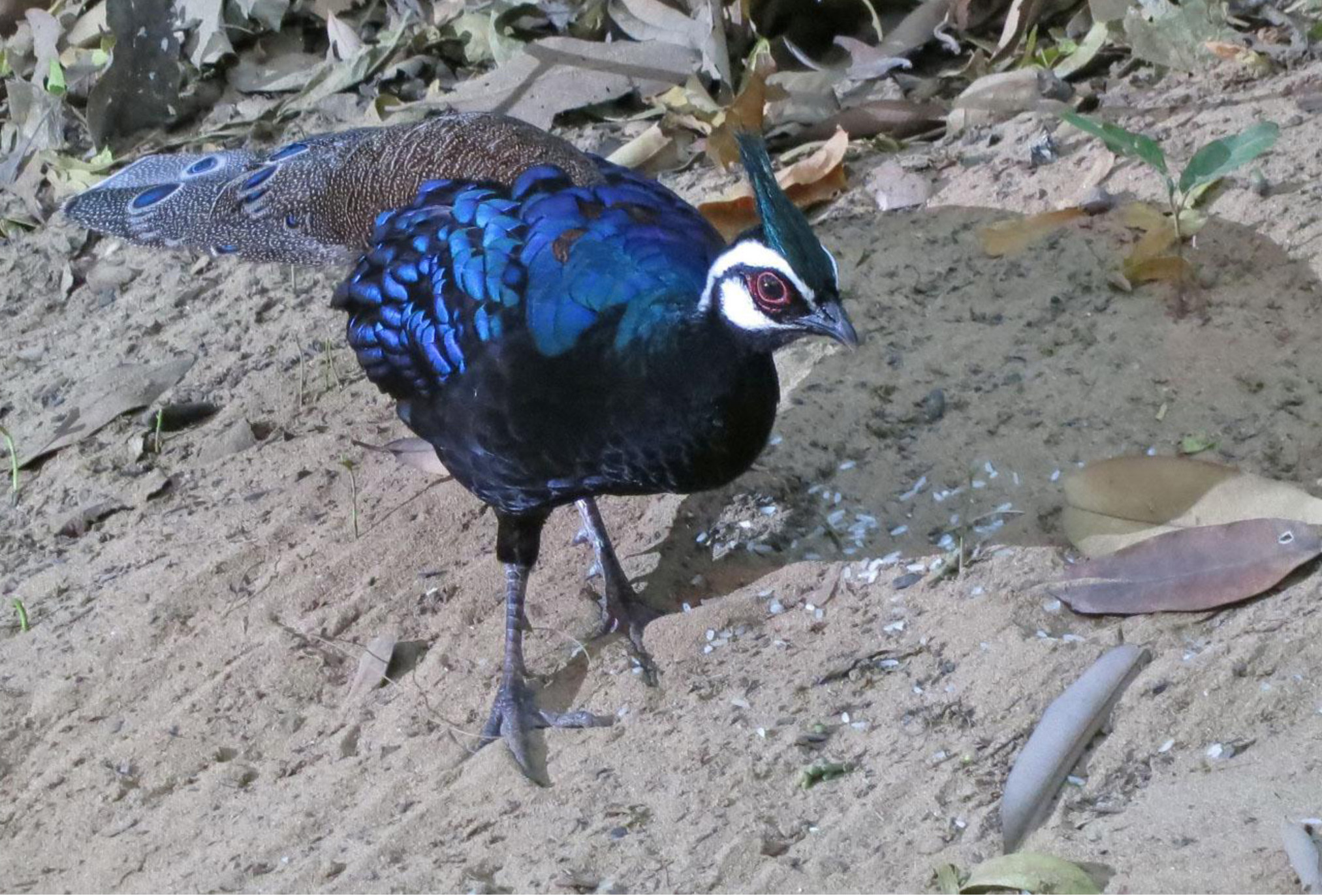
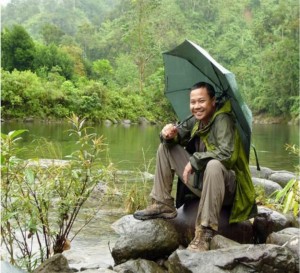
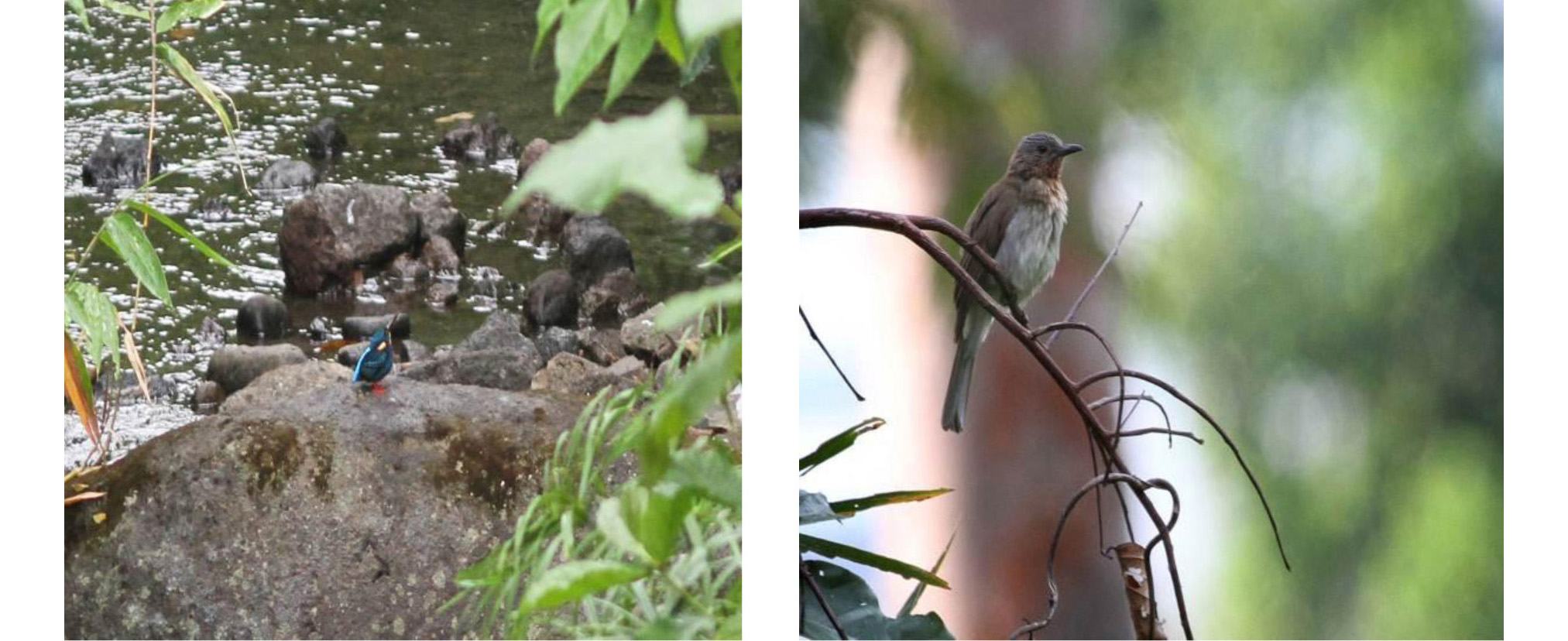
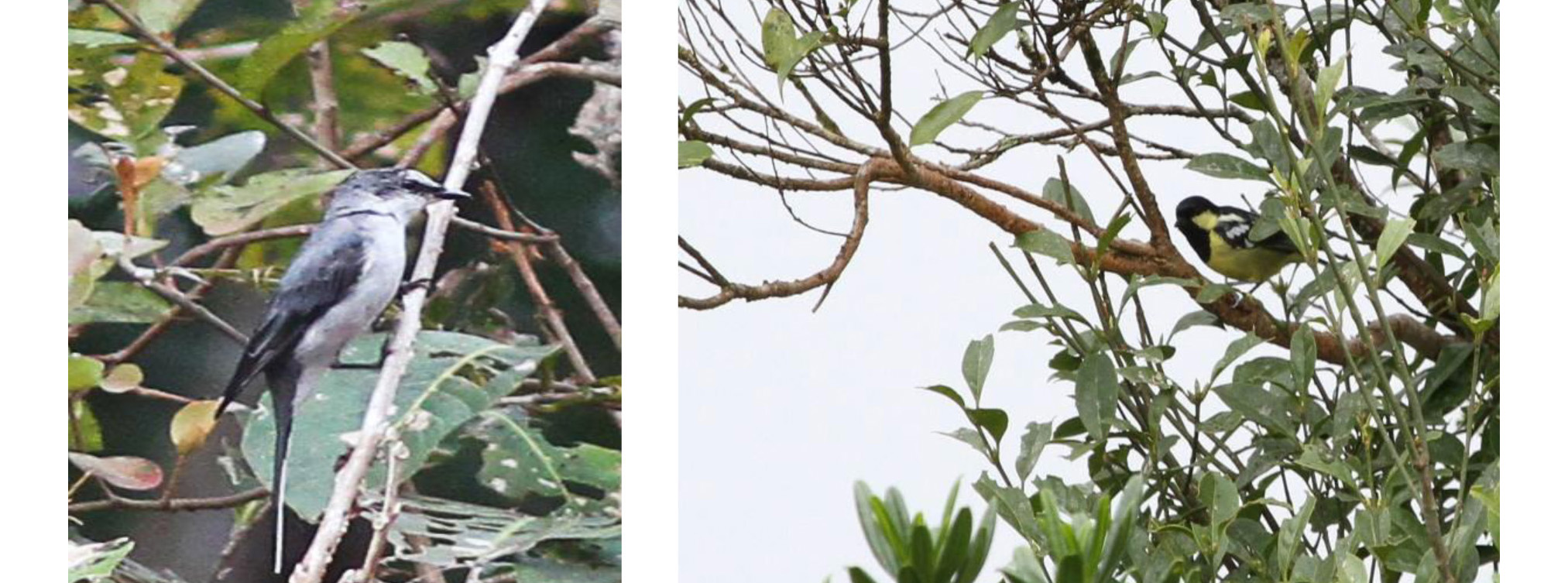



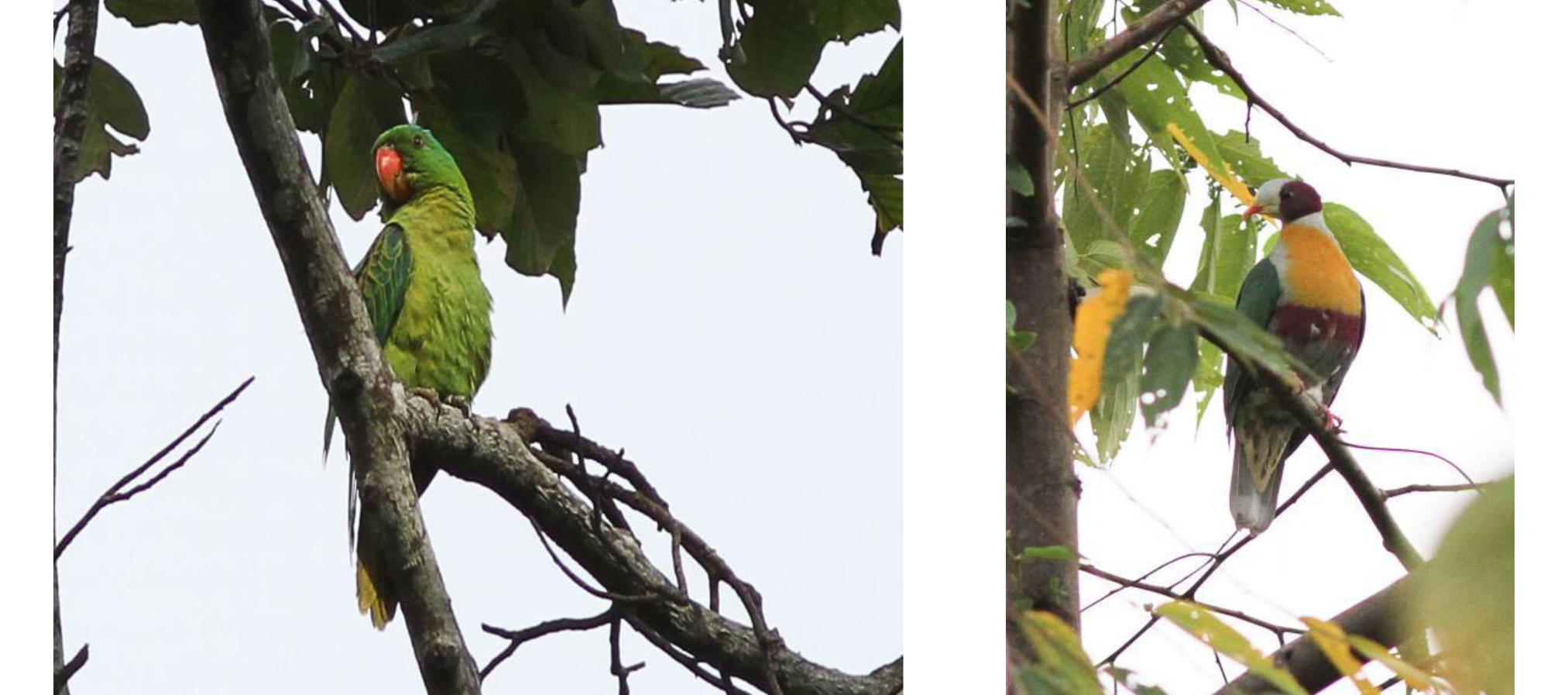
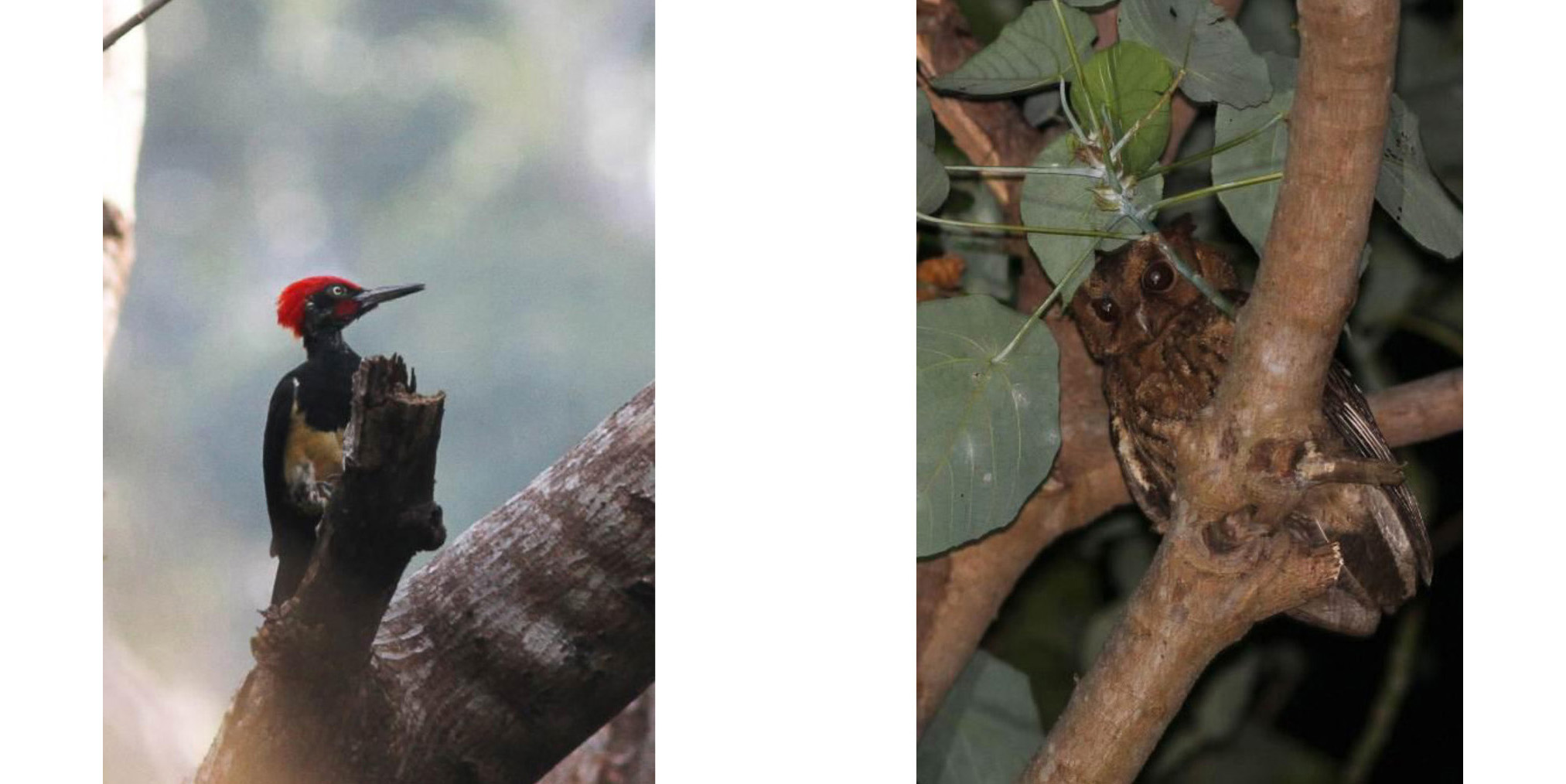


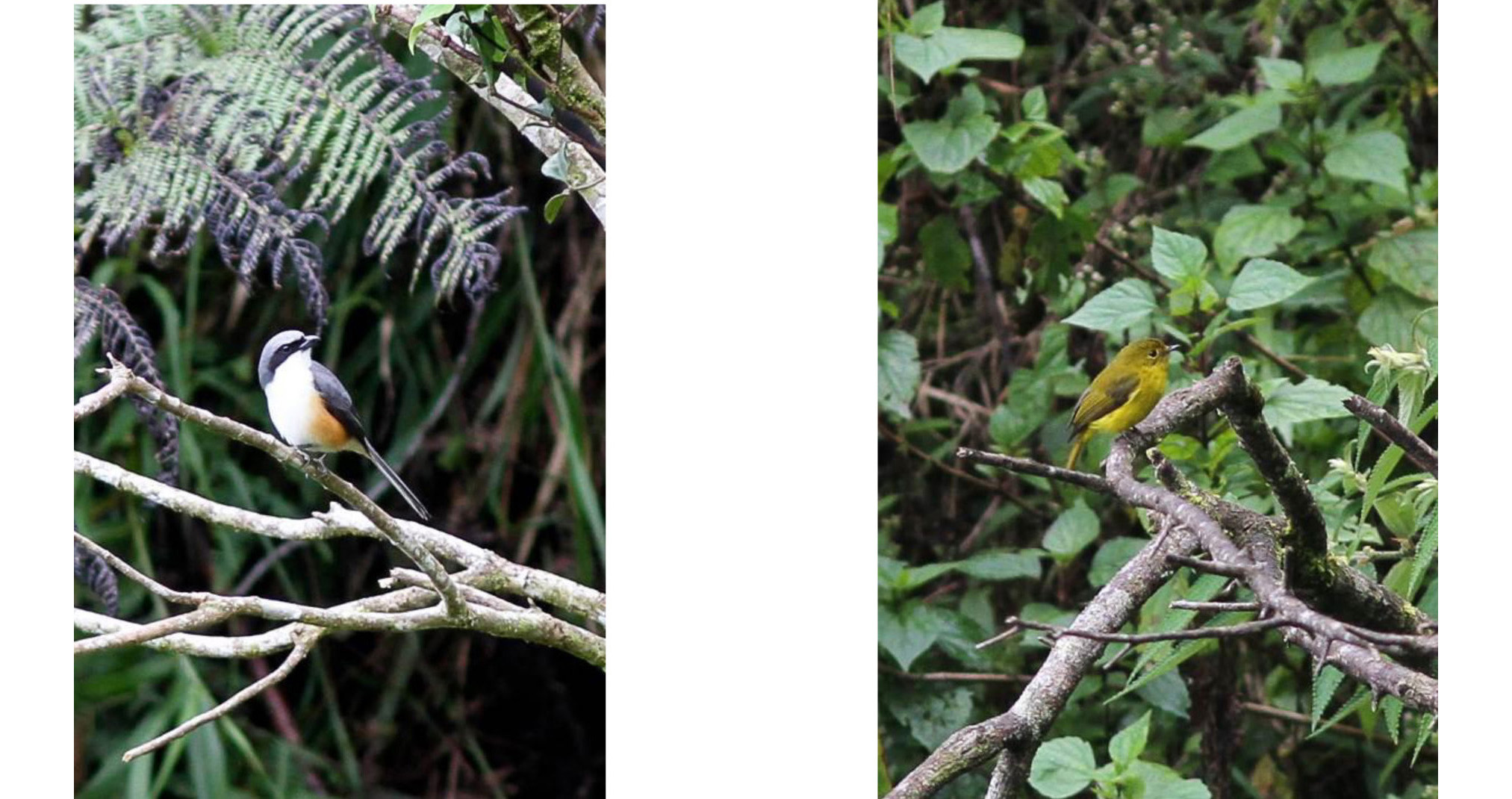
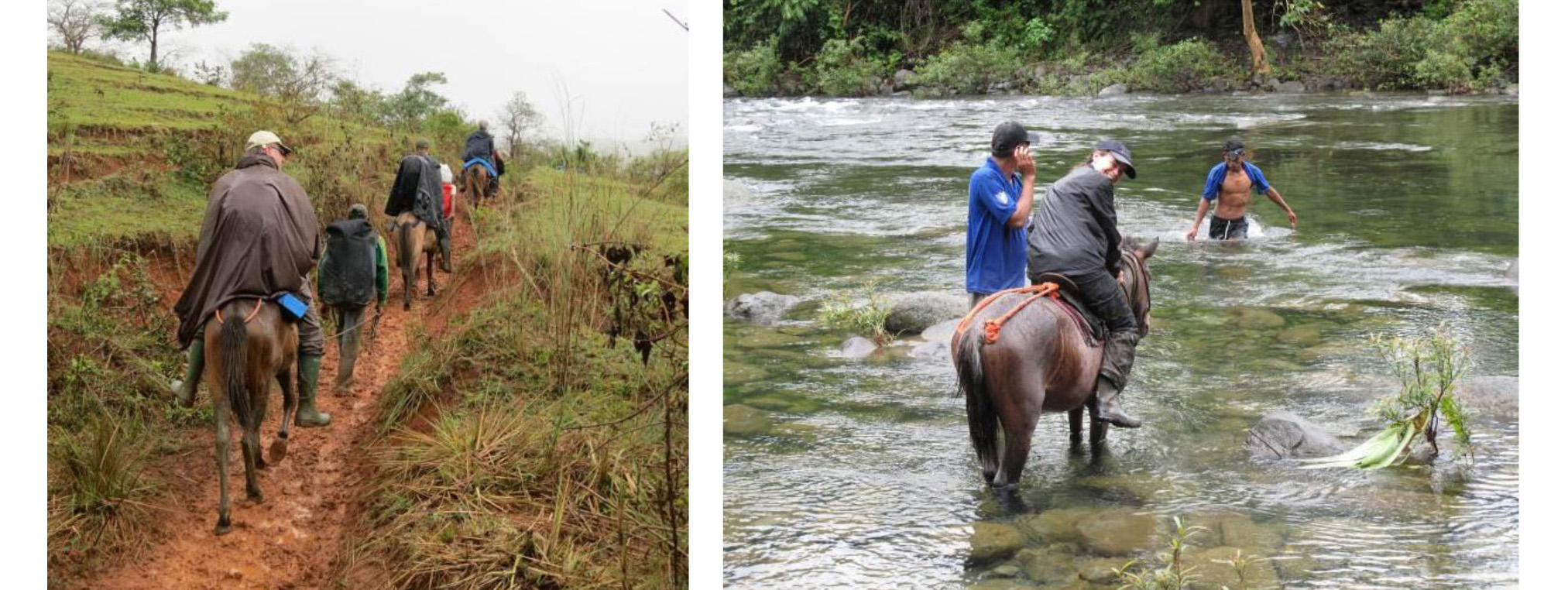



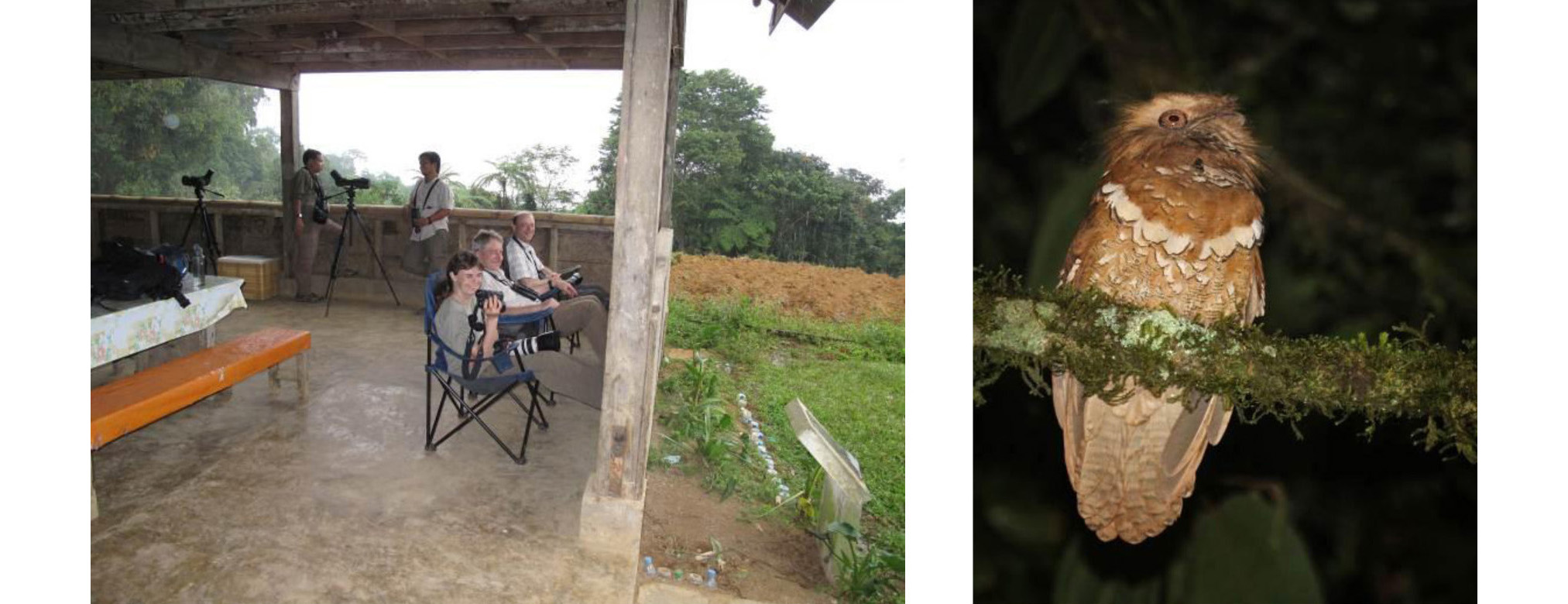




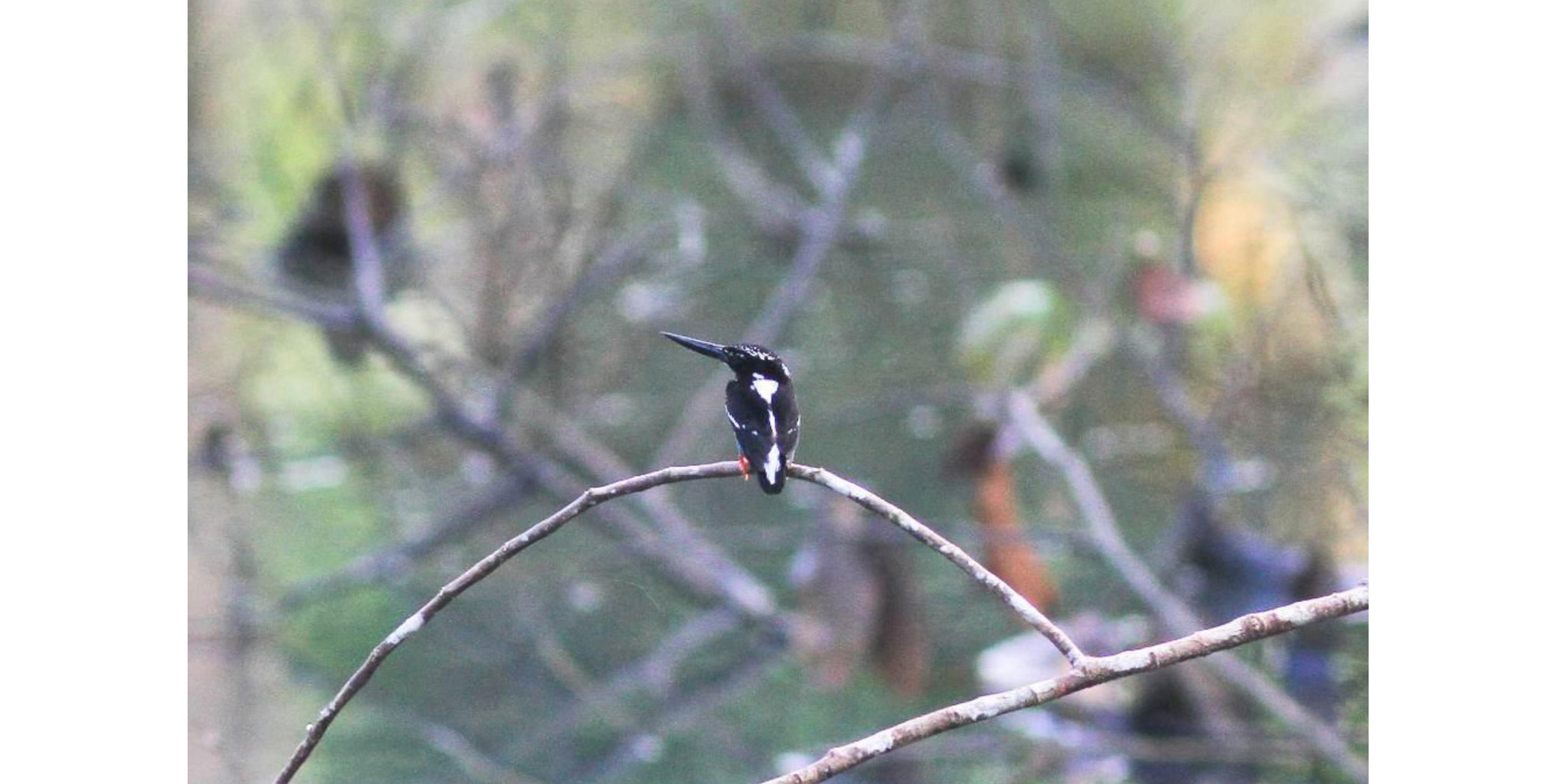
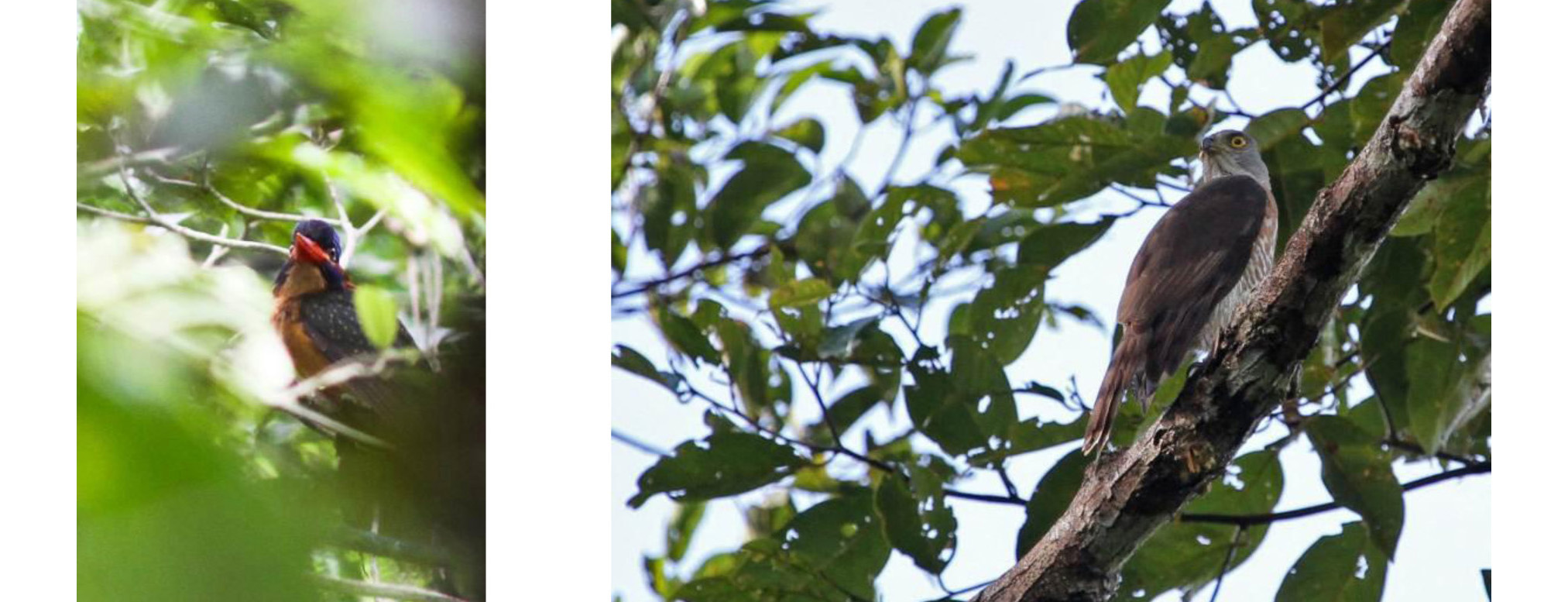
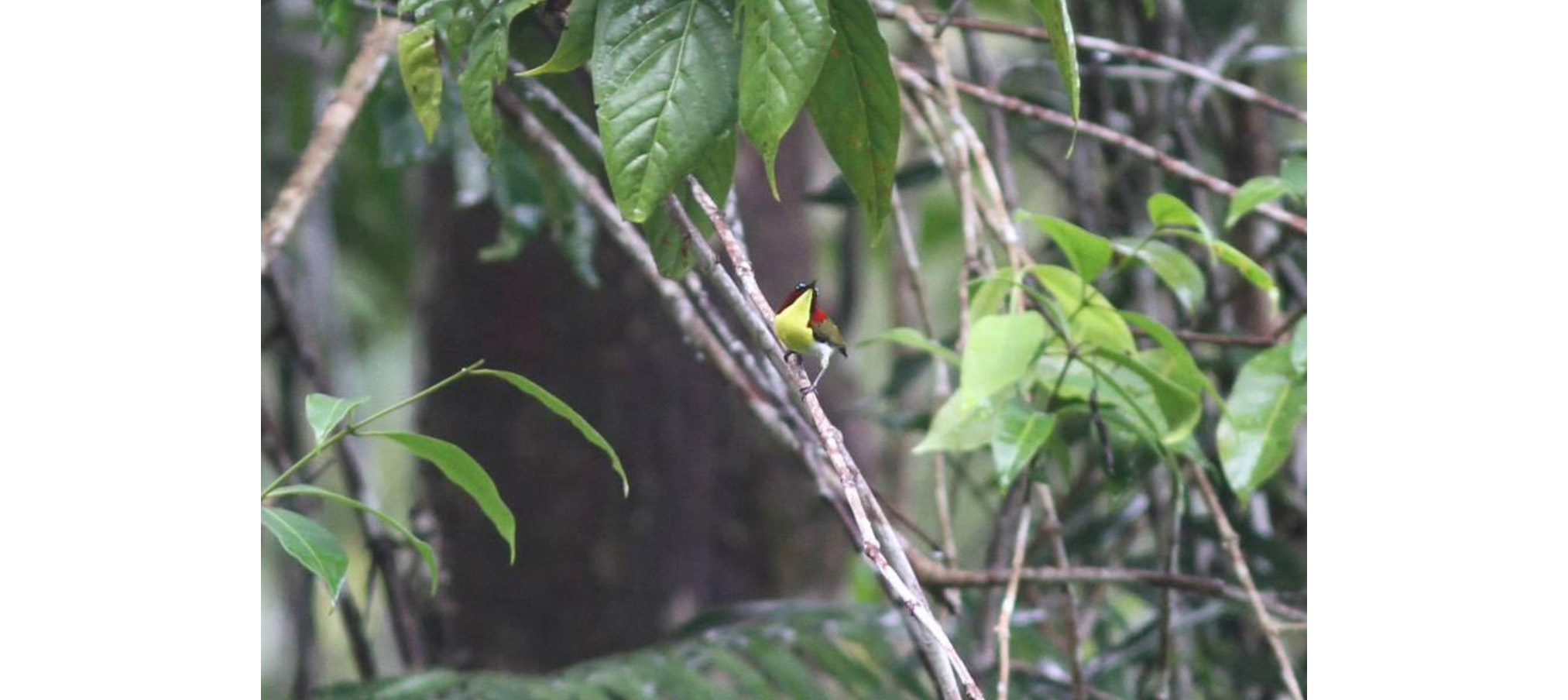

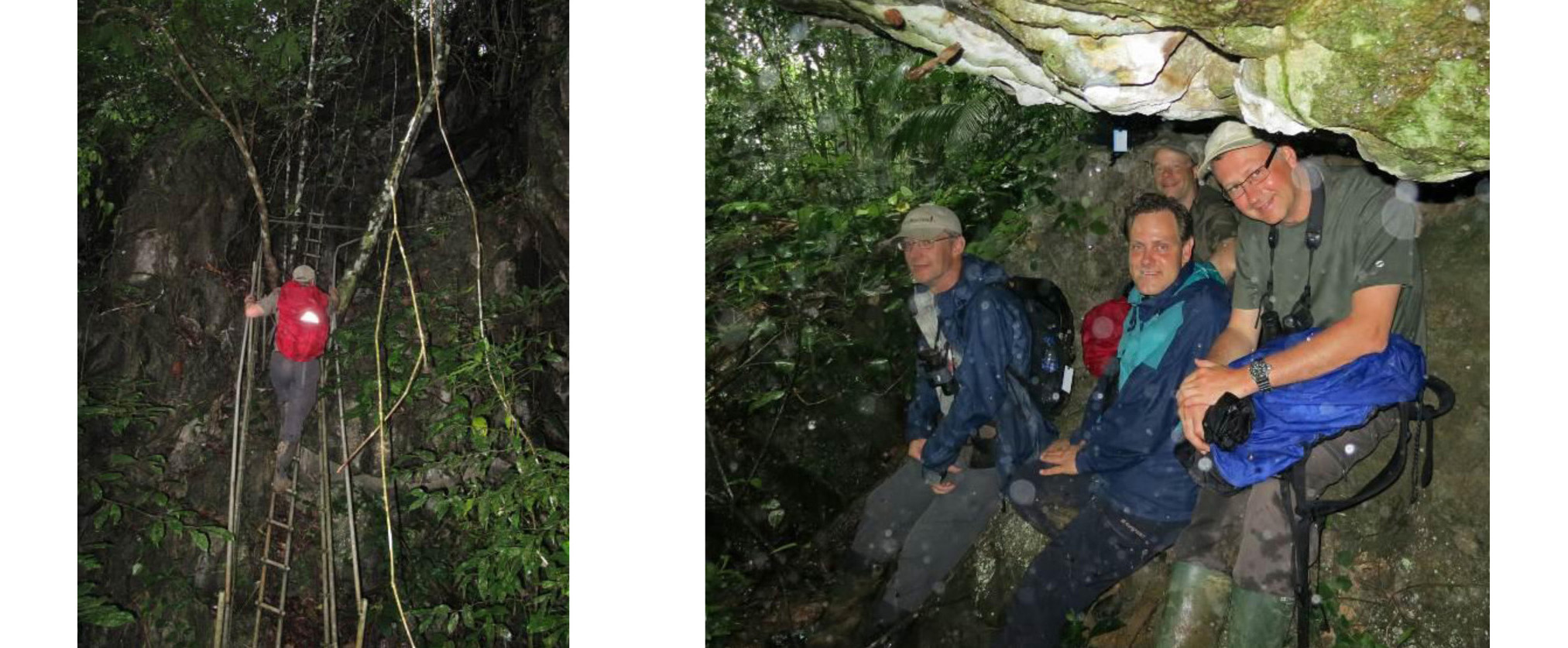
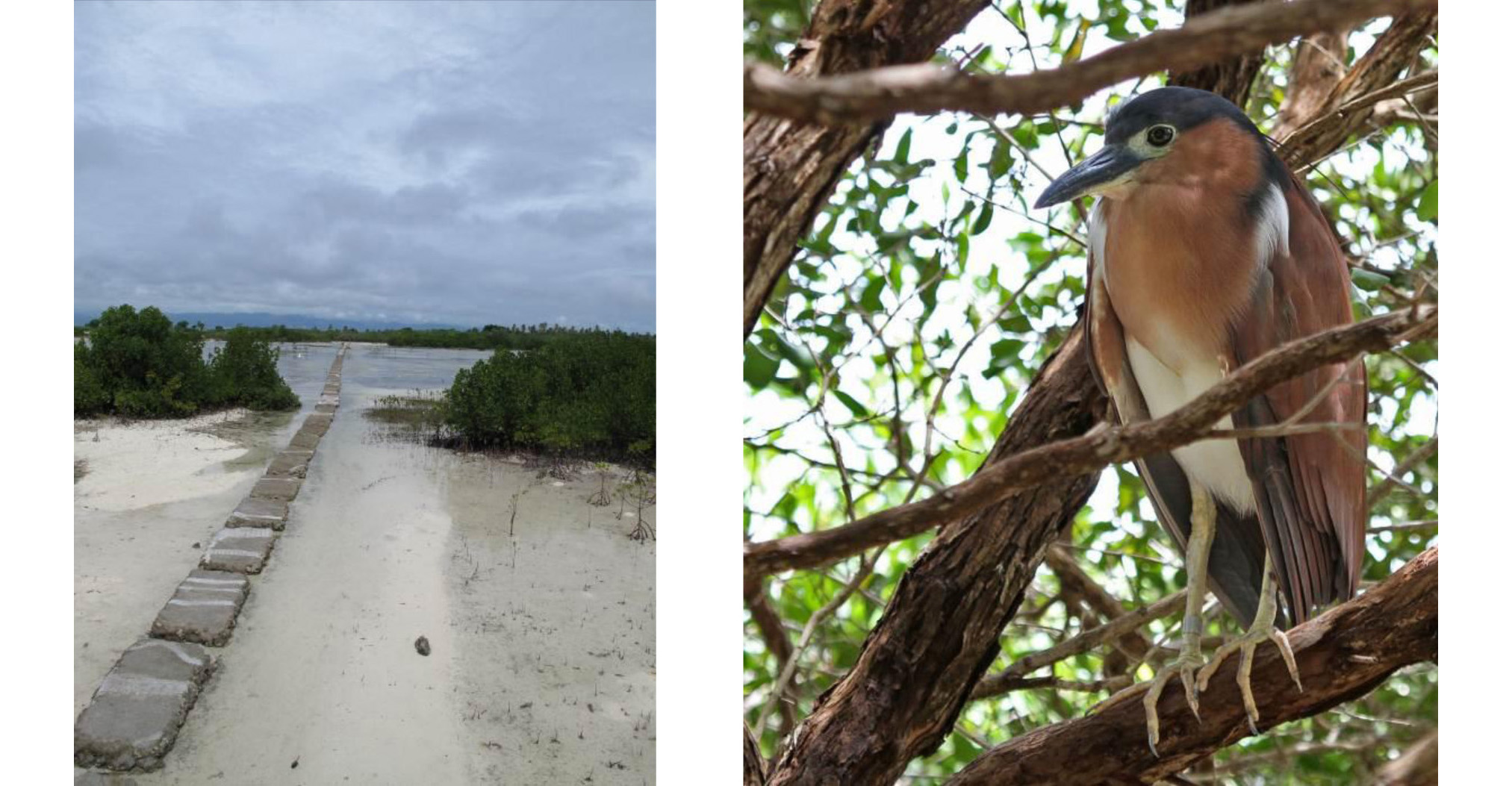
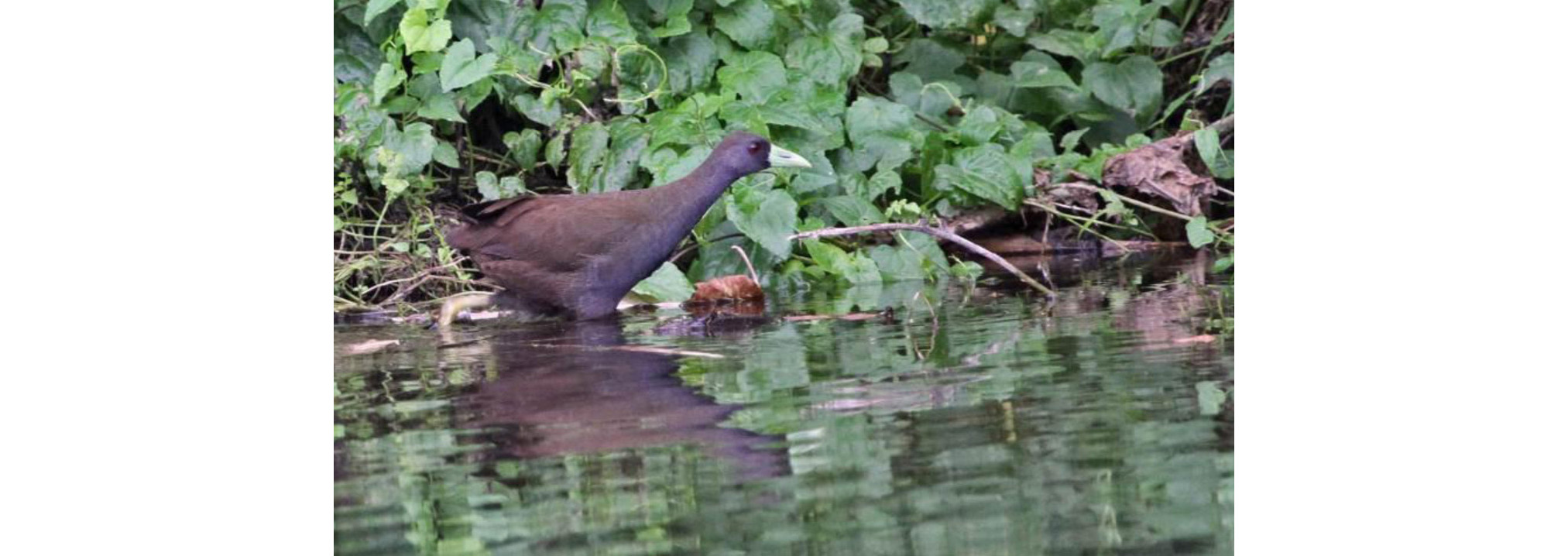
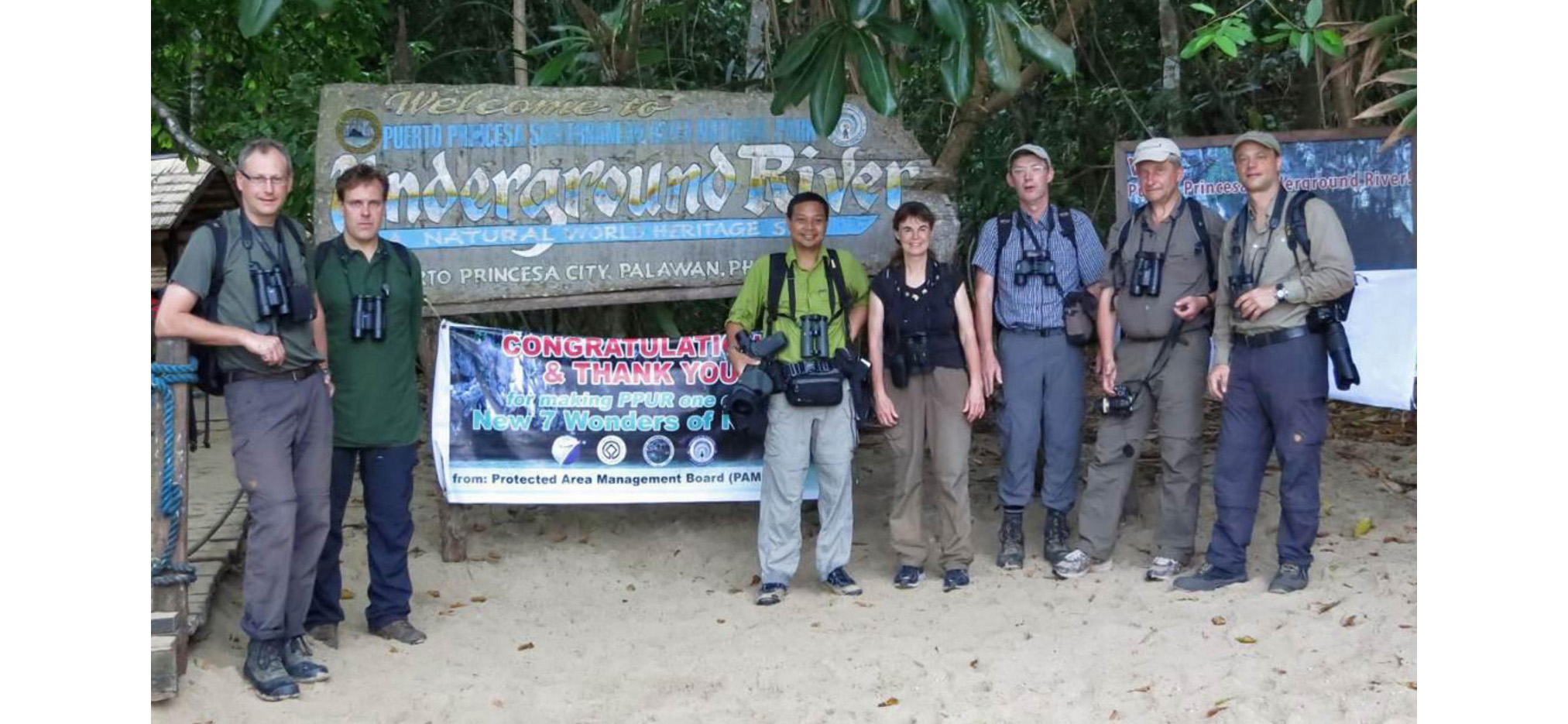



































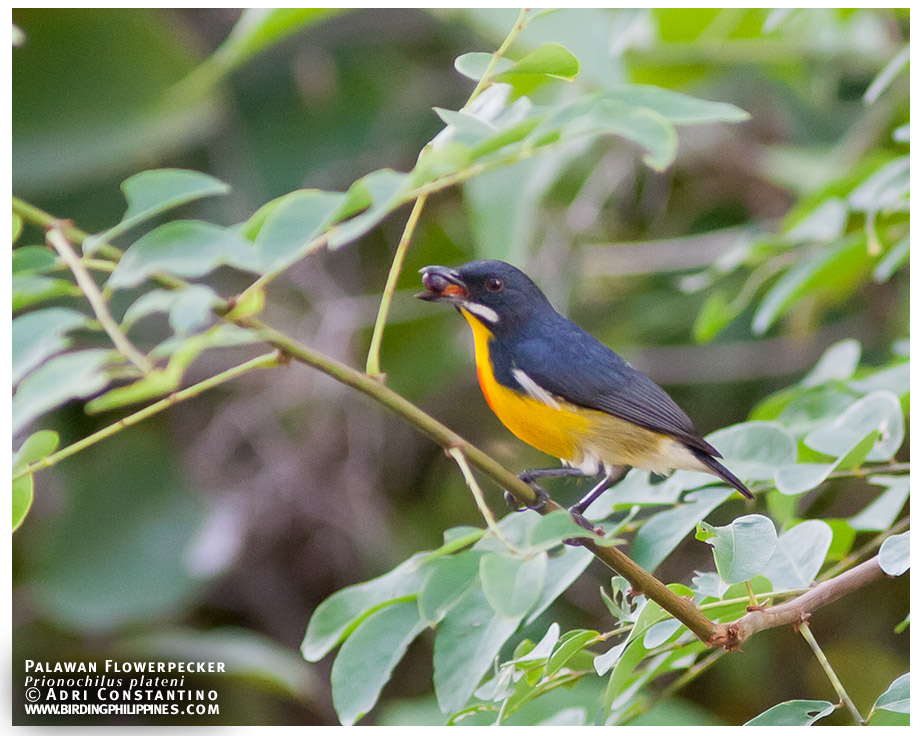 This is a high elevation Mindanao endemic - Olive-capped Flowerpecker and can be found only in forests above 900 meters. The most reliable site for this flowerpecker is in Mt. Kitanglad Mountain Range, home of the mighty Philippine Eagle.
This is a high elevation Mindanao endemic - Olive-capped Flowerpecker and can be found only in forests above 900 meters. The most reliable site for this flowerpecker is in Mt. Kitanglad Mountain Range, home of the mighty Philippine Eagle.
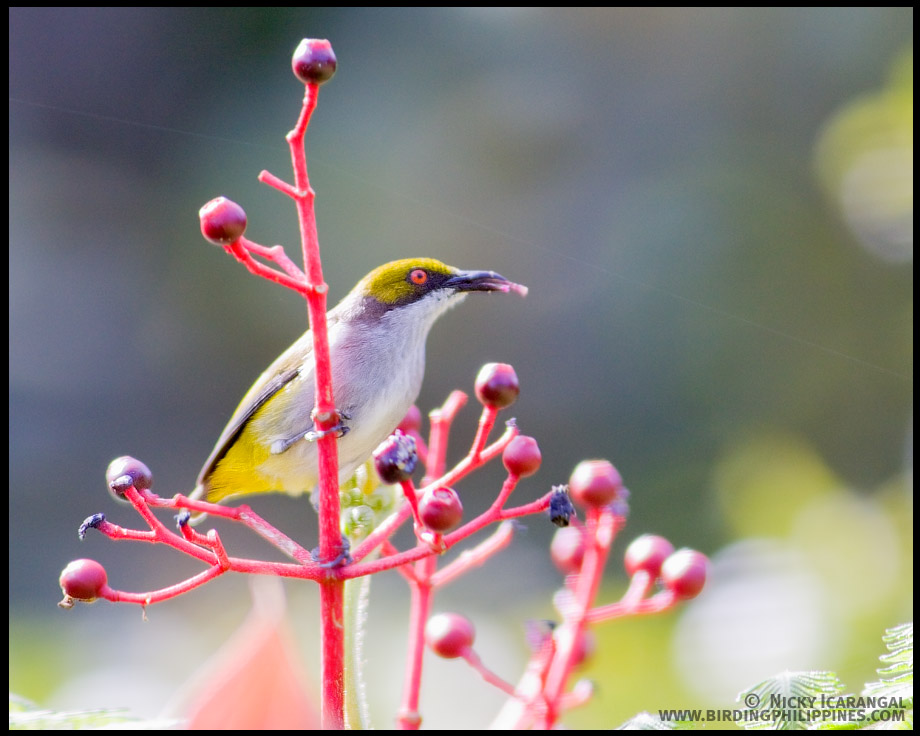 Then this is probably the most common endemic flowerpecker - Red-keeled Flowerpecker. It ranges all over the country except Palawan and is believed by field biologists to bully the ultra-rare Cebu Flowerpecker in Cebu.
This is a Buzzing Flowerpecker, a fairly drab-looking frugivore that gives a continuous high-pitched buzzing call. It ranges Luzon, Mindanao, Samar and Leyte and Bohol.
This picture is from Mindanao ...
Then this is probably the most common endemic flowerpecker - Red-keeled Flowerpecker. It ranges all over the country except Palawan and is believed by field biologists to bully the ultra-rare Cebu Flowerpecker in Cebu.
This is a Buzzing Flowerpecker, a fairly drab-looking frugivore that gives a continuous high-pitched buzzing call. It ranges Luzon, Mindanao, Samar and Leyte and Bohol.
This picture is from Mindanao ...
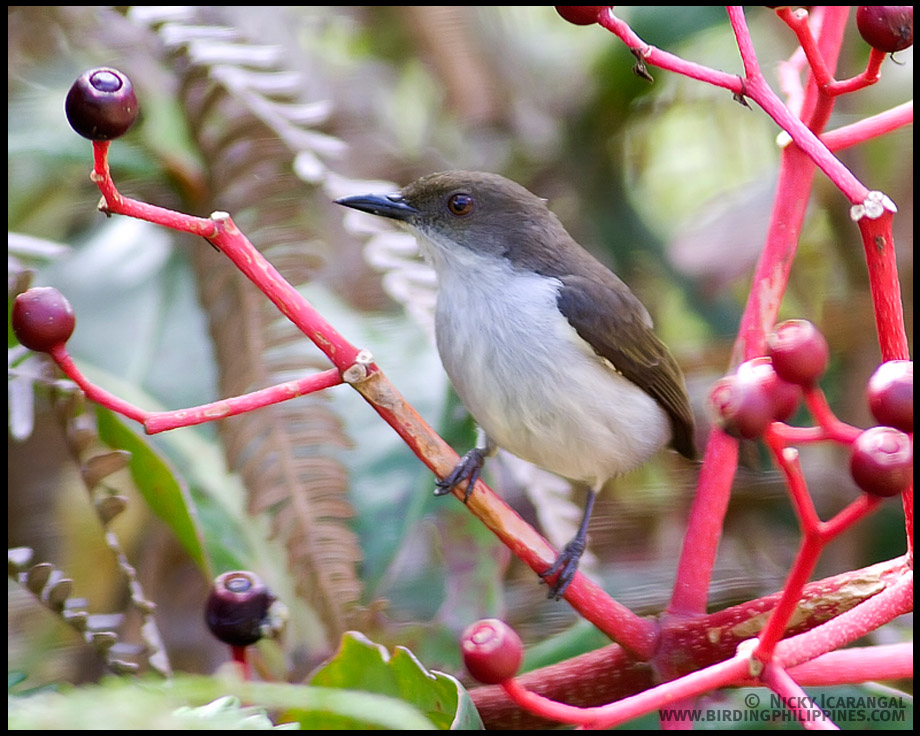 while this video is from Mt. Polis in Luzon. Notice the difference.
Then, there is this Pygmy Flowerpecker, the smallest flowerpecker in the Philippines. It is characterized by its very thin bill, narrow white throat and can be found all throughout the Philippines except in the island of Panay.
There are a few more endemic flowerpeckers like this Flame-crowned Flowerpecker (left) and this Bicolored Flowerpecker (right). The Flame-crowned Flowerpecker ranges in the high elevation mountains of Luzon and Mindanao. The one on the left was taken in Mt. Polis, Luzon while the Bicolored Flowerpecker is a lowland flowerpecker distinguished from the Red-keeled by its very stout bill.
while this video is from Mt. Polis in Luzon. Notice the difference.
Then, there is this Pygmy Flowerpecker, the smallest flowerpecker in the Philippines. It is characterized by its very thin bill, narrow white throat and can be found all throughout the Philippines except in the island of Panay.
There are a few more endemic flowerpeckers like this Flame-crowned Flowerpecker (left) and this Bicolored Flowerpecker (right). The Flame-crowned Flowerpecker ranges in the high elevation mountains of Luzon and Mindanao. The one on the left was taken in Mt. Polis, Luzon while the Bicolored Flowerpecker is a lowland flowerpecker distinguished from the Red-keeled by its very stout bill.
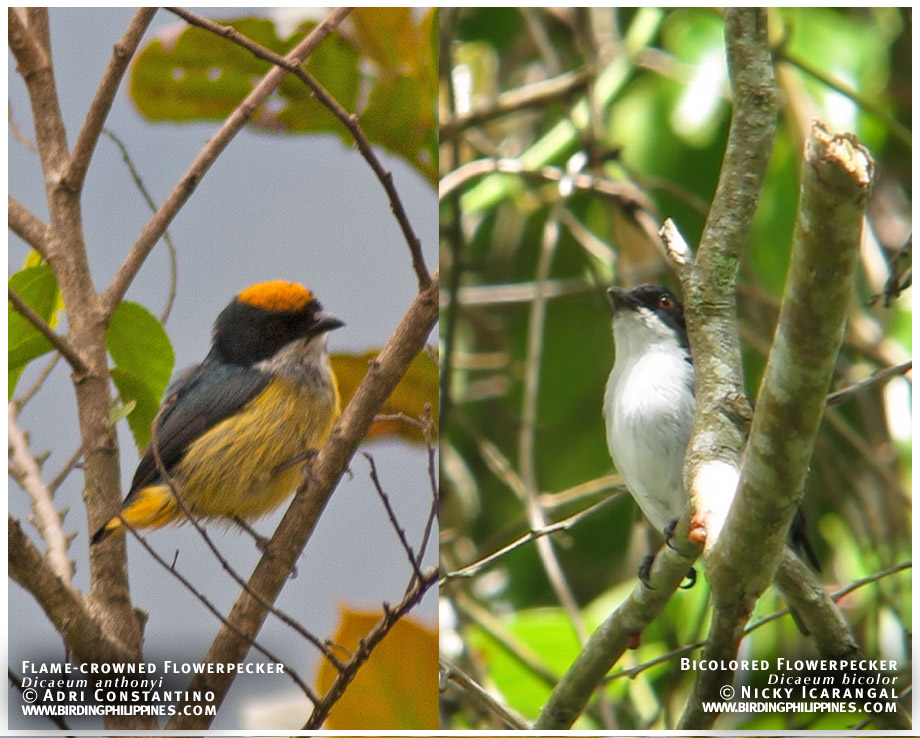 Other endemic flowerpeckers include the Striped Flowerpecker - similar to a Grey-streaked Flycatcher but this one wags its tail sideways - found in most islands through the Philippines; the uncommon lowland fruigivore Olive-backed Flowerpecker - found in Luzon, Mindanao, Samar and Leyte; the ultra rare Cebu Flowerpecker - found only in the remaining forests of Cebu, a small island in Central Philippines; the highly localized Whiskered Flowerpecker found only in the highlands of Mindanao; Scarlet-collared Flowerpecker from Mindoro and Visayan or Black-belted Flowerpecker, a split from Red-keeled Flowerpecker, found in Negros.
There are two non-endemic flowerpeckers: this gorgeous Orange-bellied Flowerpecker ranging from most Philippine islands
Other endemic flowerpeckers include the Striped Flowerpecker - similar to a Grey-streaked Flycatcher but this one wags its tail sideways - found in most islands through the Philippines; the uncommon lowland fruigivore Olive-backed Flowerpecker - found in Luzon, Mindanao, Samar and Leyte; the ultra rare Cebu Flowerpecker - found only in the remaining forests of Cebu, a small island in Central Philippines; the highly localized Whiskered Flowerpecker found only in the highlands of Mindanao; Scarlet-collared Flowerpecker from Mindoro and Visayan or Black-belted Flowerpecker, a split from Red-keeled Flowerpecker, found in Negros.
There are two non-endemic flowerpeckers: this gorgeous Orange-bellied Flowerpecker ranging from most Philippine islands
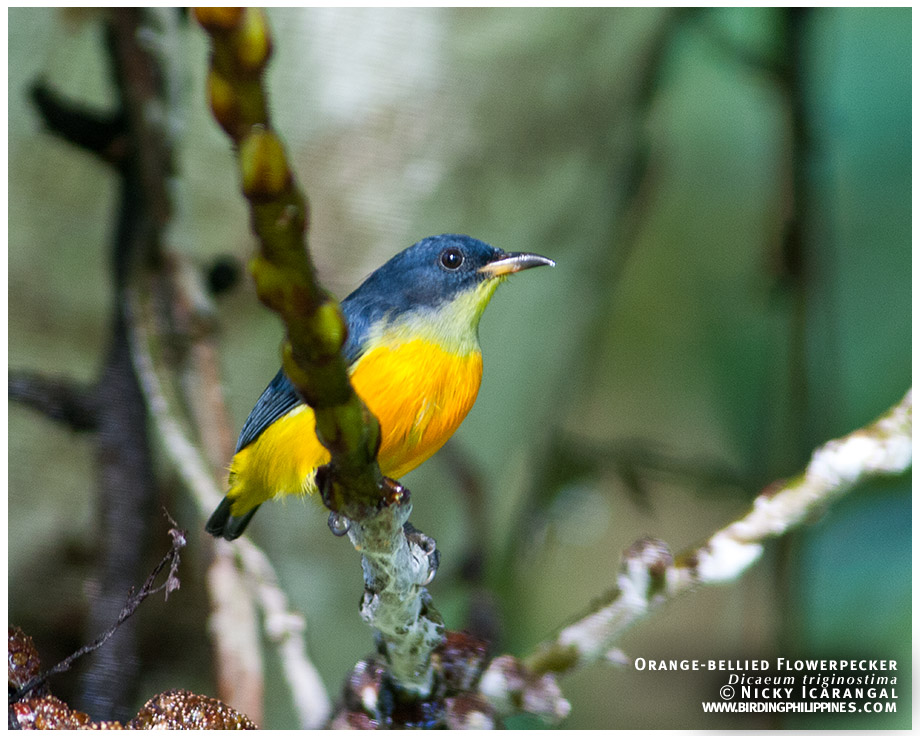 And this Fire-breasted Flowerpecker from high elevation mountains of Luzon and Mindanao.
And this Fire-breasted Flowerpecker from high elevation mountains of Luzon and Mindanao.
 So next time you go out birding, make sure you pay attention to these small flowerpeckers, they maybe your next tick! 🙂
Next post, more videos from this excellent new site in Northern Luzon: Camp Sawa.
So next time you go out birding, make sure you pay attention to these small flowerpeckers, they maybe your next tick! 🙂
Next post, more videos from this excellent new site in Northern Luzon: Camp Sawa. 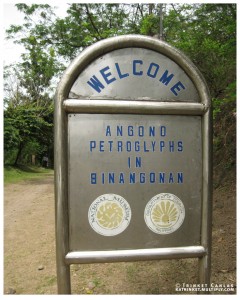
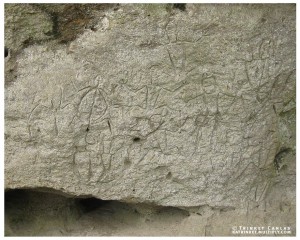
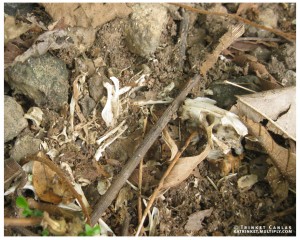
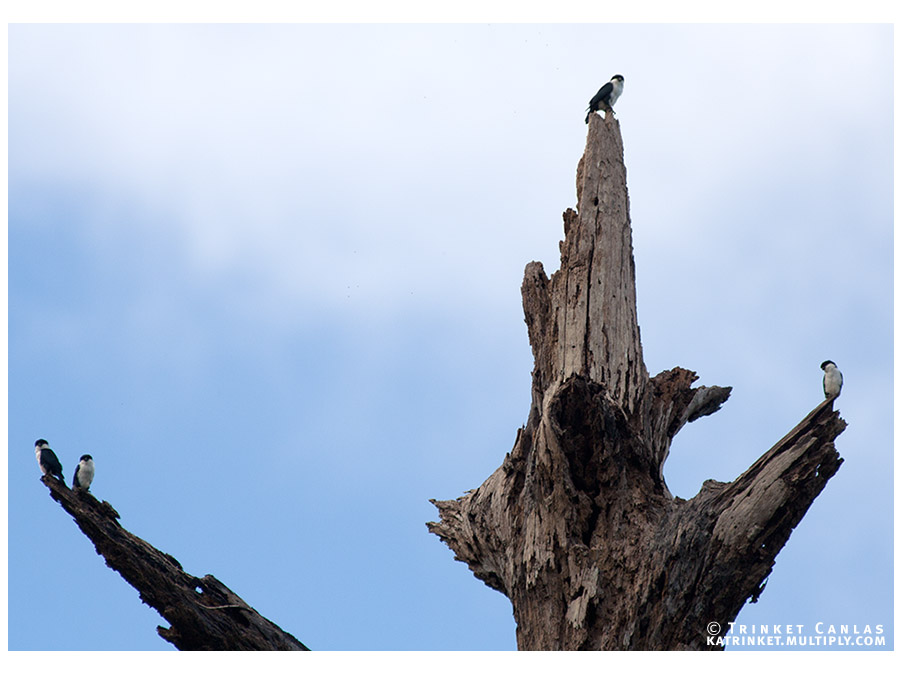 Philippine Falconet, Microhierax erythrogenys
December 2011, Mt. Makiling Forest Reserve, Laguna, Luzon, Philippines
Philippine Falconet, Microhierax erythrogenys
December 2011, Mt. Makiling Forest Reserve, Laguna, Luzon, Philippines